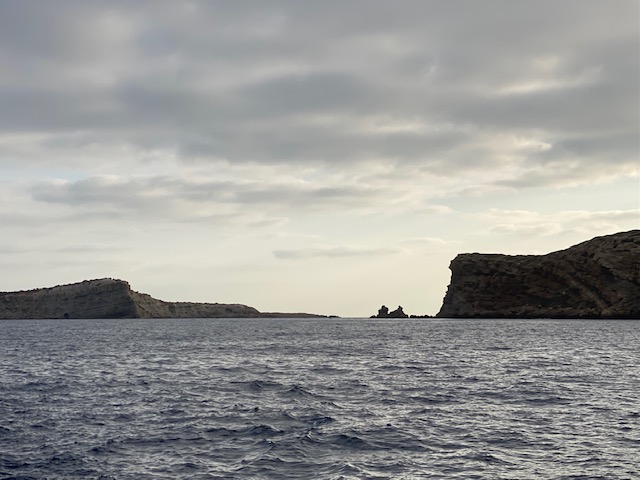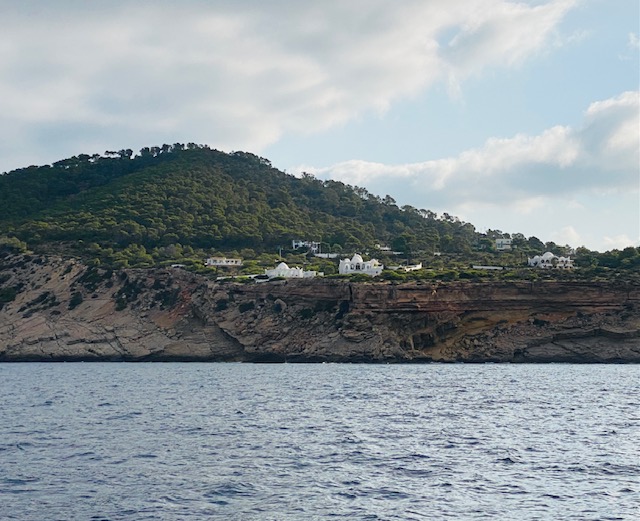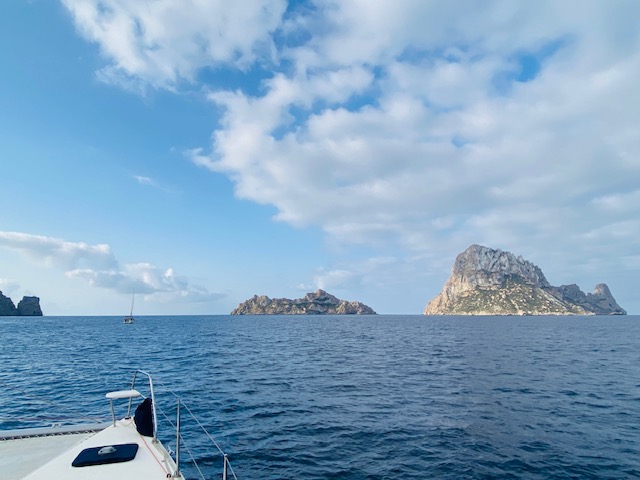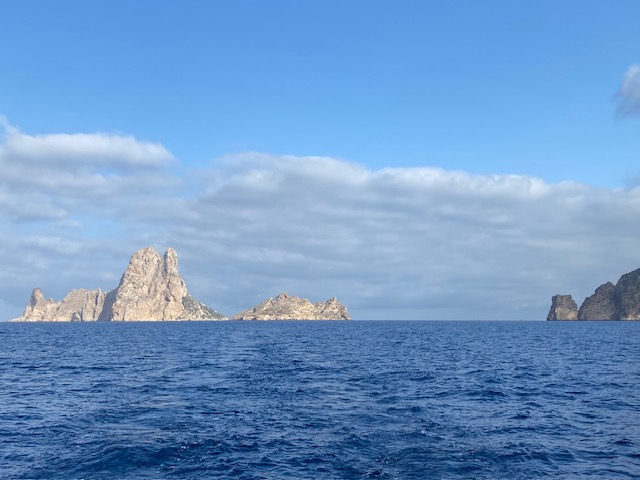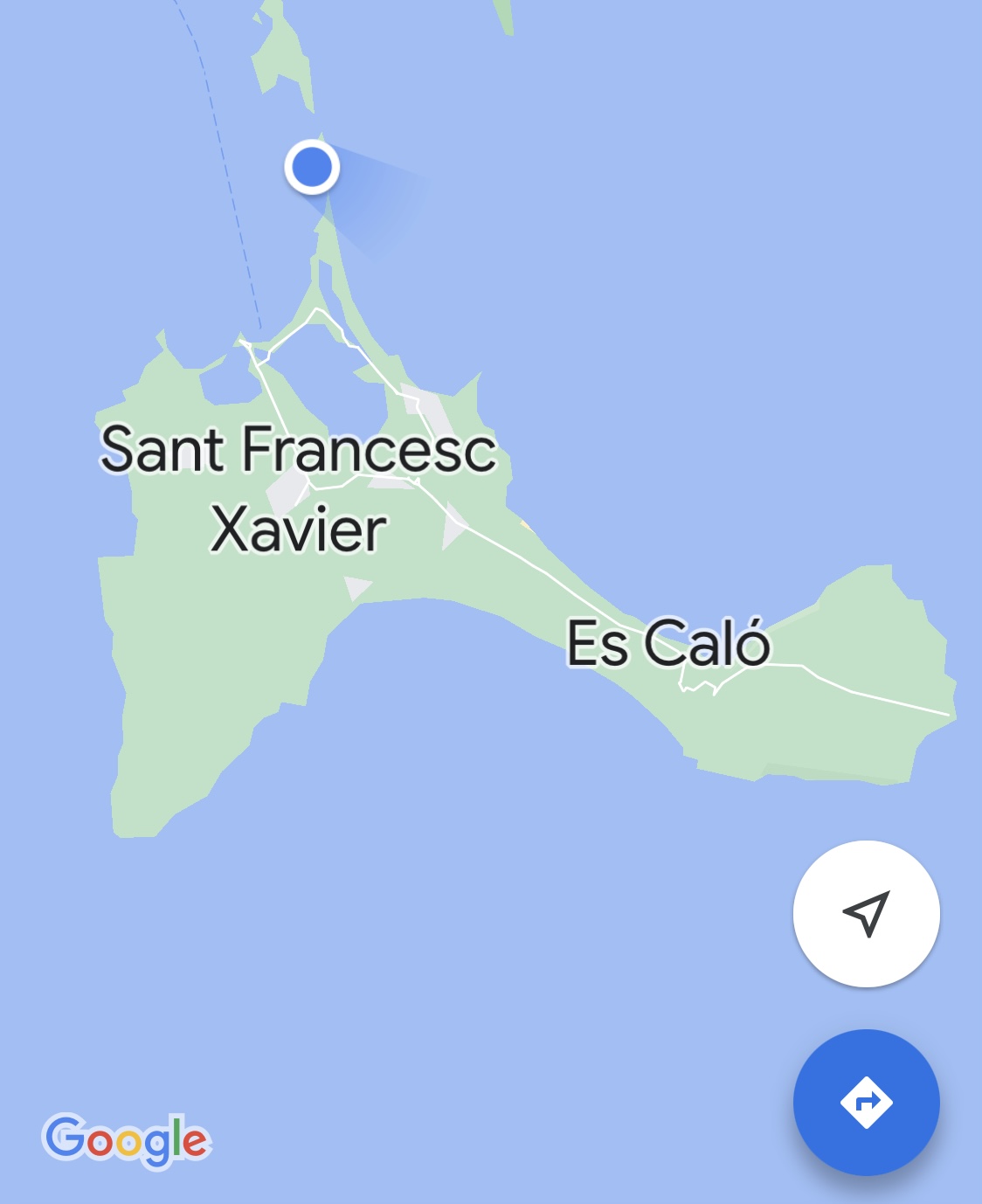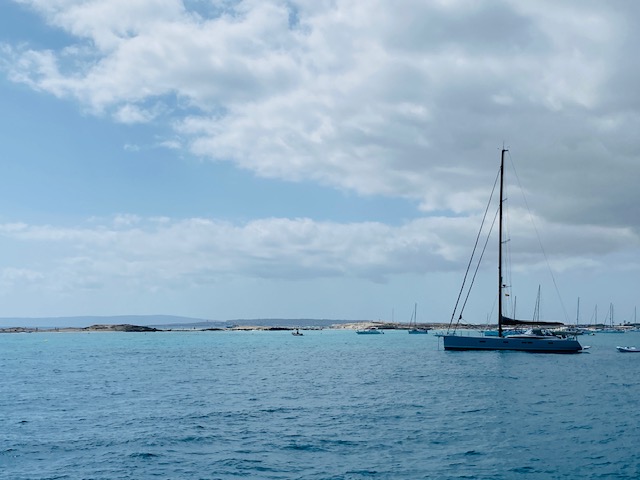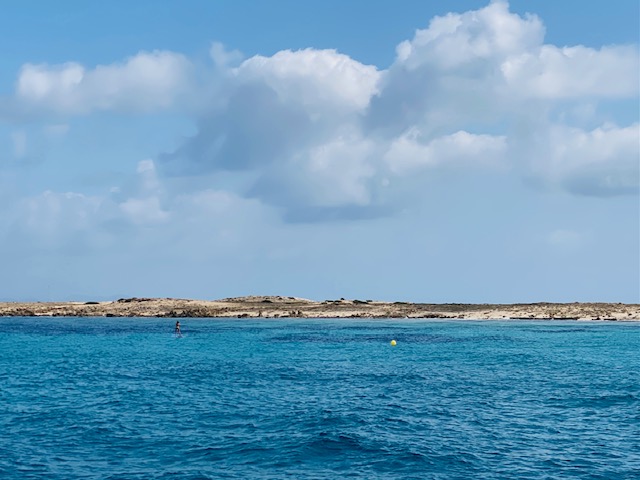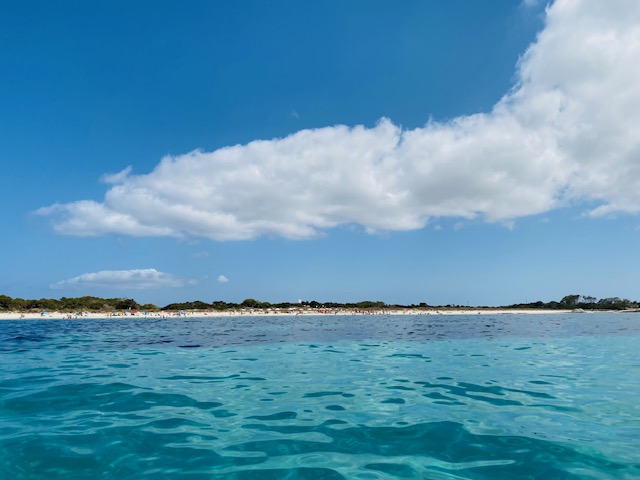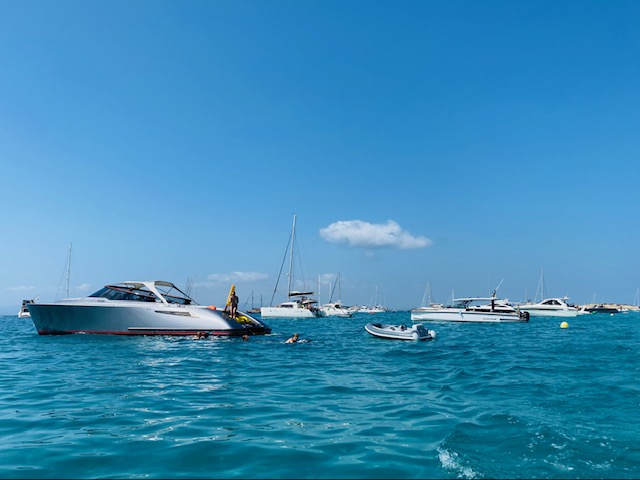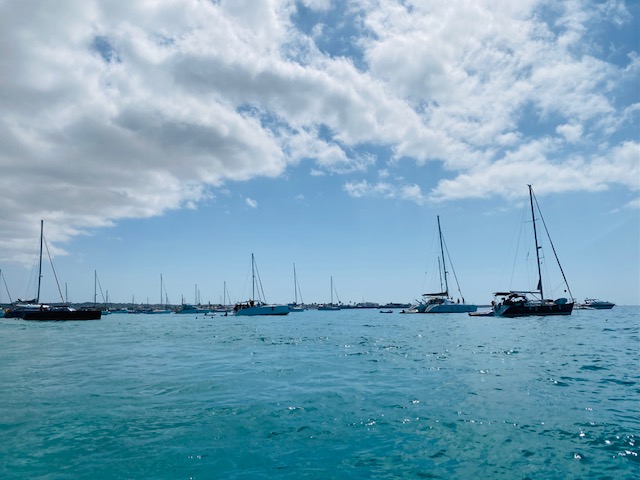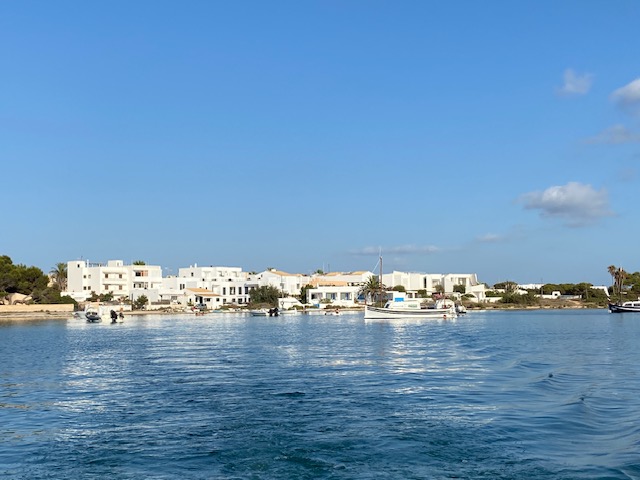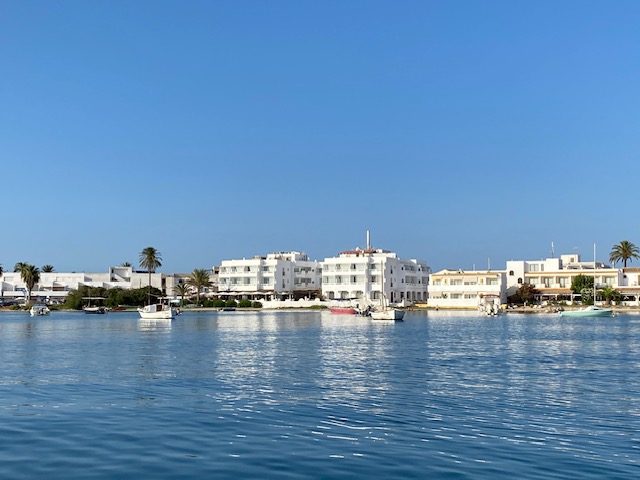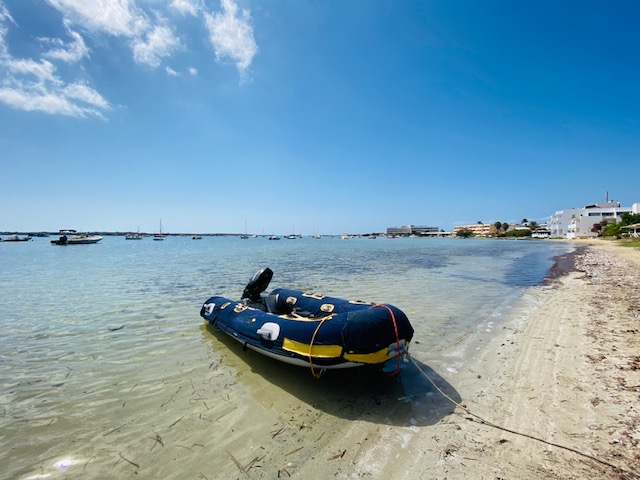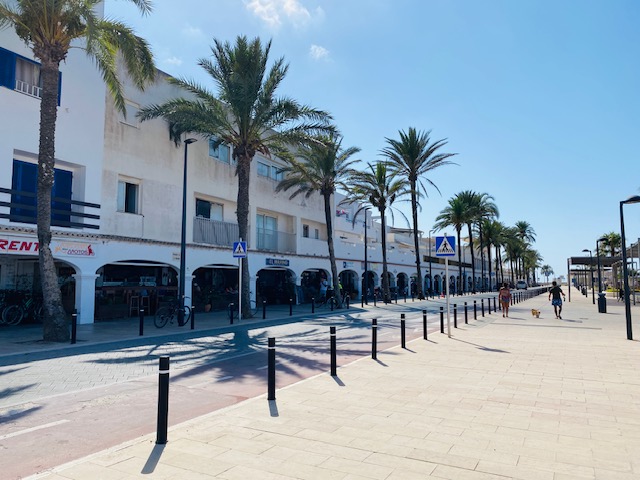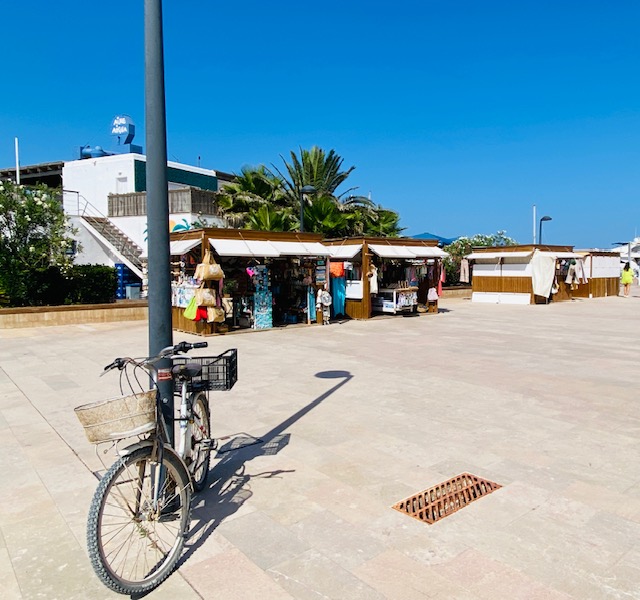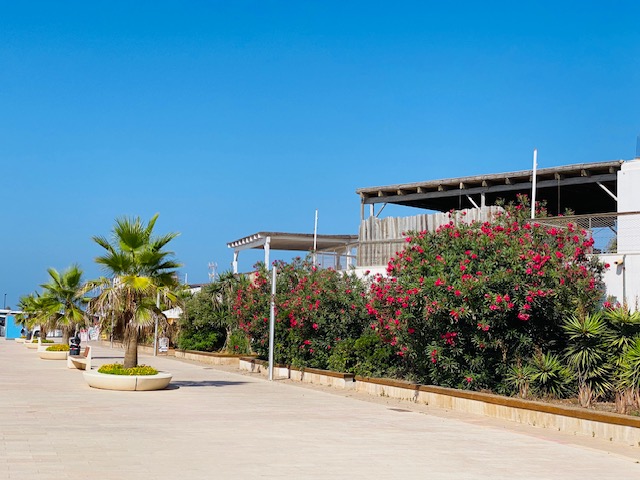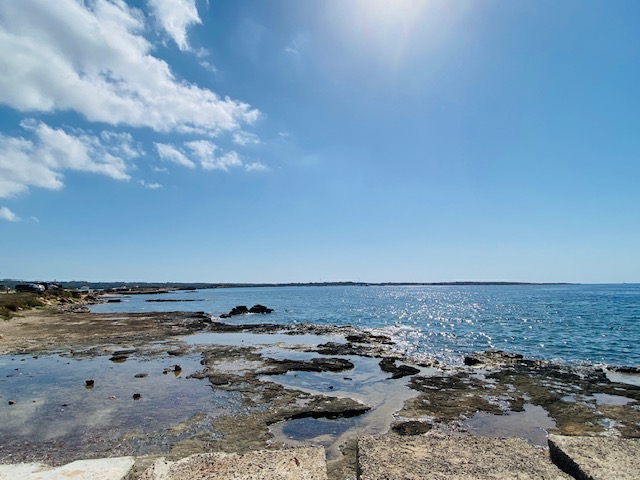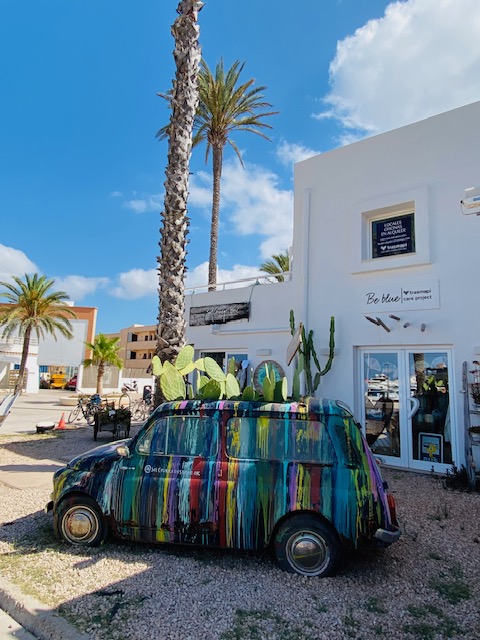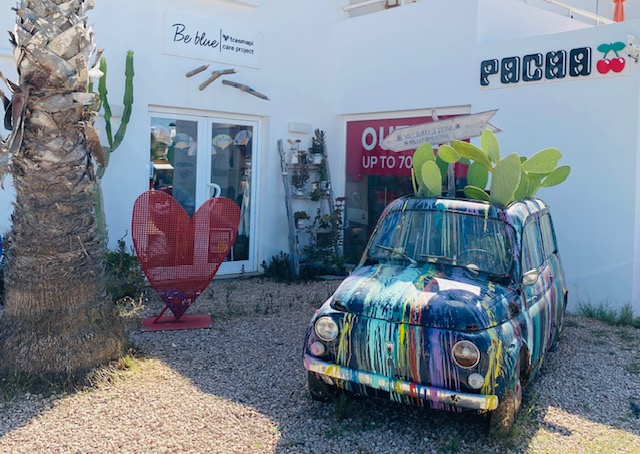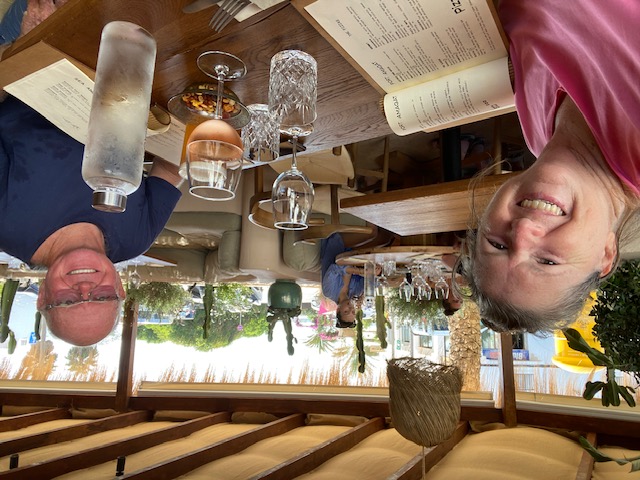After huffing and puffing all the way up the streets and steps leading to the castle grounds, we continued to huff and puff up to the castle itself and to the tower, in particular. Fortunately there were enough wheelchair ramps so Elaine didn’t have to negotiate all the steps, but there were enough steps nonetheless.
En route we passed a number of historic sites, including “Muralla de Carlos III” (The Wall of Carlos III), a defensive wall built around the old city, at the request of King Carlos III and constructed from 1771-1781, part of which still stands near the marina, “Escalera en Caracol” (The Spiral Staircase), which had fantastic murals resembling an aquarium, as well as the Autopsy Pavilion; a rather strange name for this construction built in 1768, but, as the name implies, it was originally part of the Royal Navy Hospital, where student surgeons took their anatomy classes. We could also see “Castillo de San Julián” to the east overlooking the harbour.
Once we reached the top of “Castillo de la Concepción”, we enjoyed fabulous views and could see the full extent of the enormous natural harbour, as well as the old town, which revealed more historic sites, including the Bullring and Roman Amphitheatre, the ruins of the Santa Maria Cathedral, destroyed during the Spanish Civil War and Moros Castle. As a backdrop, the more modern high-rise residential areas stood in the distance.
After leaving the castle we walked along some of the backstreets, noticing beautifully restored old buildings set in amongst the numerous modern buildings, as well as hidden ancient ruins between the high-rises, most probably missed, but peering over a wall or two, revealed them.
A coffee and baked delight was enjoyed at a very quirky café just off the main square, called “El Soldadito de Plomo” (The Tin Soldier), quirky due to the mural and the furniture, as well as all the deliberately mismatched crockery; a large leather suitcase served as a table, a cut out bathtub was used as a sofa, a ballet tutu as a lampshade, to mention just a few of the quirks; very creative!
Walking back along “Plaza Héroes de Cavite”, passing City Hall on the way, we returned to Paw Paw, both in need of an afternoon nap.
Cartagena was founded in the 3rd Century BC, around 223 BC, by the Carthaginian general, Hasdrubal, the Fair, hailing from Carthage, a settlement in what is now Tunisia, that later became a city-state and then an empire. Founded by the Phoenicians in the 9th Century BC, Carthage reached its height in the 4th Century BC as one of the largest metropolises in the world and the centre of the Carthaginian Empire, a major power in the ancient world that dominated the western and central Mediterranean Sea, but was subsequently conquered by the Romans in 209 BC.
Arab sources refer to Cartagena as “Qartayanna al-Halfa”, the translation of its Latin name, “Carthago Spartaria”. From the 10th Century muslim travellers and geographers underlined the importance of its port. The walled medina was built around the hill of La Concepción, the highest and closest to the port. At the top stood the fortress; the town's most important fortified enclosure. Historical text mentions the existence of a mosque as well and areas of a necropolis, with the characteristic graves facing towards Mecca, have been found on the outskirts of the town.
During the 12th Century the Kingdom of Murcia was ruled by the Almohad Caliphate, a North African berber muslim empire. At its height, it controlled much of the Iberian Peninsula and North Africa.
In 1245 the city was conquered by the armies of Prince Alfonso of Castile (the future King, Alfonso X, the Wise), who was the descendent of the last family to hold the crown of the Holy Roman Empire of the German Nation, following which christians began to settle in the city. In 1272 Alfonso X founded the Military Order of Santa Maria of Spain, an order with a clear seafaring vocation and whose convent headquarters were located in Cartagena.
At the time of Cartagena’s incorporation within the Crown of Castile, like the rest of the Kingdom of Murcia, it was a border town facing potentially hostile states: Granada, Aragon and North Africa. That meant that life for the new Christian settlers was not easy, but tax benefits and the possibility of upper social and economic mobility encouraged people to settle in Cartagena. However, since the Castilians had difficulty in repopulating the abandoned muslim town with christians, “Castillo de la Concepción” was never finished, but what existed was still the main defensive element of the city during the 16th and 17th Centuries.
The establishment of the Bishopric of Cartagena re-launched the importance of the town and enabled it to benefit from the advantages of the fact that it housed the powerful Episcopal government. The new diocese covered an extensive territory from the Spanish south-east, the site of the Kingdom of Murcia.
In 1478 the Tribunal of the Holy Office of the Inquisition was created, an institution to maintain Catholic orthodoxy in their kingdoms. Profession of the Catholic faith entailed adherence to the monarchy and its most important objective: political unity. For this reason the Edict of Expulsion of the Jews was signed by the monarchs on 31 March 1492. The directive ordered all those who did not renounce Judaism and who were not baptised, to be expelled. Cartagena was an important port through which the Jews left the states of the Catholic Monarchs, most of who then settled in North Africa, Portugal and the Italian states.
After the Catholic Monarchs solidified the political unity of Spain with their religious unification project and the Act of 12 February 1502, the expulsion of the Mudejar began.
The vast majority of Mudejars chose to convert, were baptised and became christians by law, but remained muslims in consciousness and culture. It was then that the Mudejars became known as Moriscos. However, the new issue of religious unification was not resolved until 1609 by King Philip III, who ordered the expulsion of all Moriscos from the Iberian Peninsula.
The most significant reason for the expulsion was the possible alliance of the Moriscos with the Turks and Berbers, who were constantly attacking the coasts of Cartagena and the Spanish Levante.
The Kingdom of Murcia was the last Morisco stronghold in Spain. In 1613, thousands of Moriscos embarked at the port of Cartagena heading to North Africa, where the flow of expelled individuals was soon rerouted to the French and Italian ports.
Dinner was supposed to be a barbecue, but unfortunately, other than the house propane bottle, we’d run out of propane. It wasn’t too much of an inconvenience, though; Roy just used the oven grill instead.
Before dinner we also changed our sailing itinerary, yet again. Instead of heading to Almerimar, we decided to make more use of the daylight on either side of the overnight sail and continue on to Motril to take us further down the Spanish coast, saving us three separate day hops. An overnight passage meant an early start, so it was early to bed too.
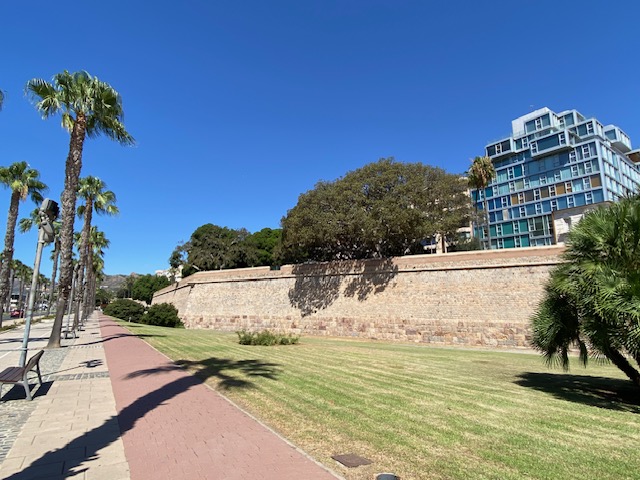
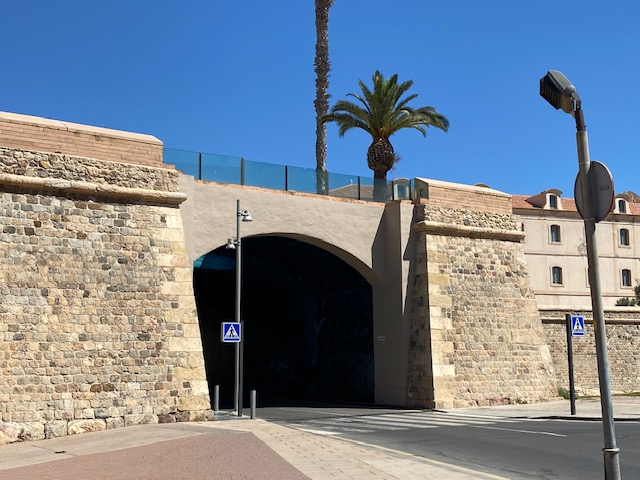
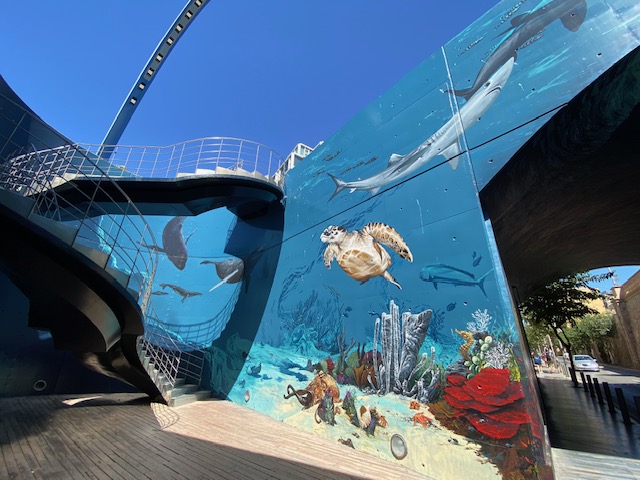
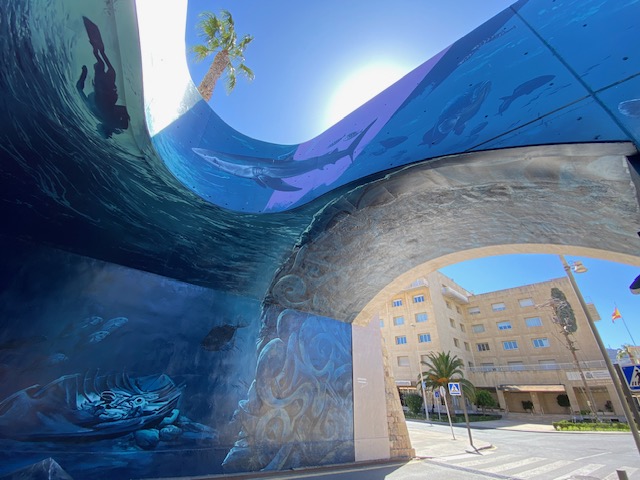
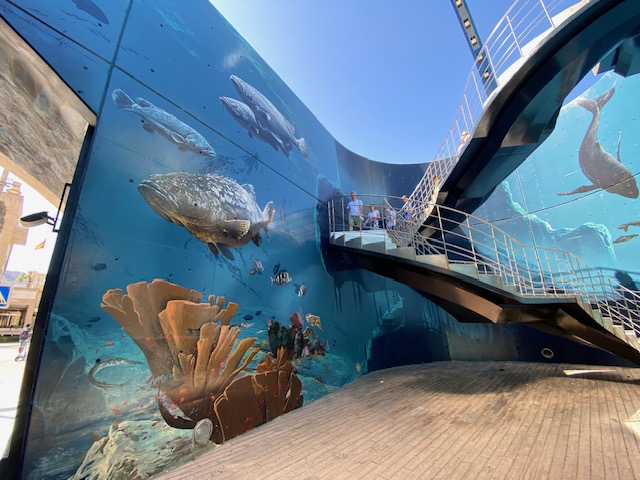
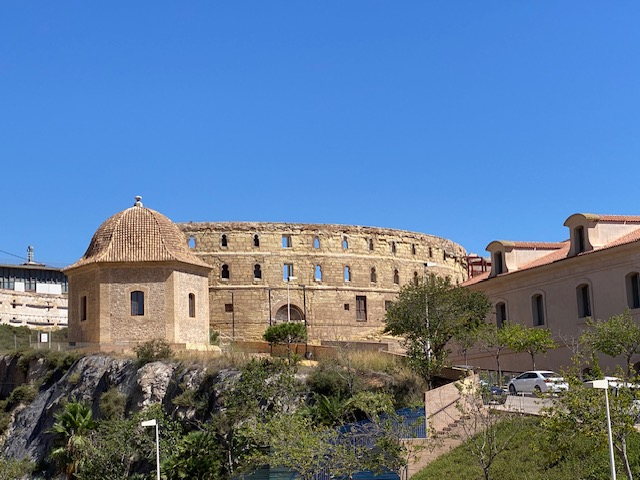
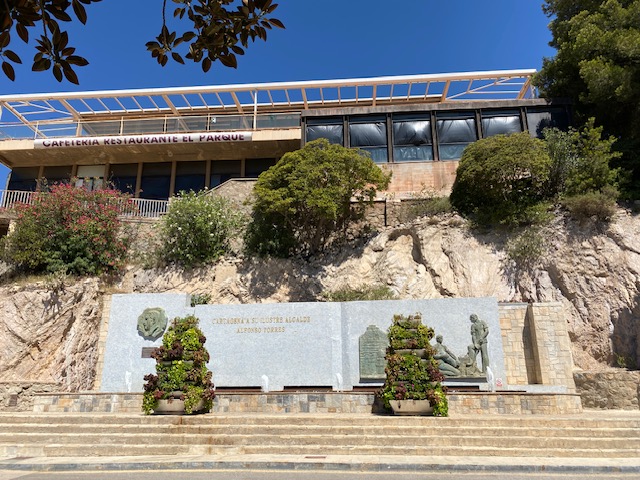
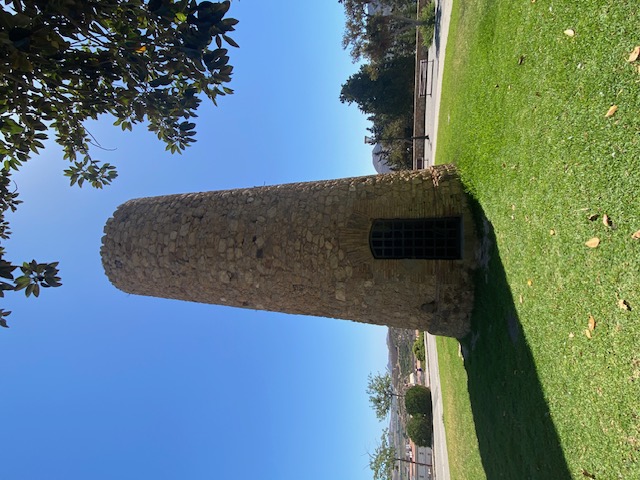
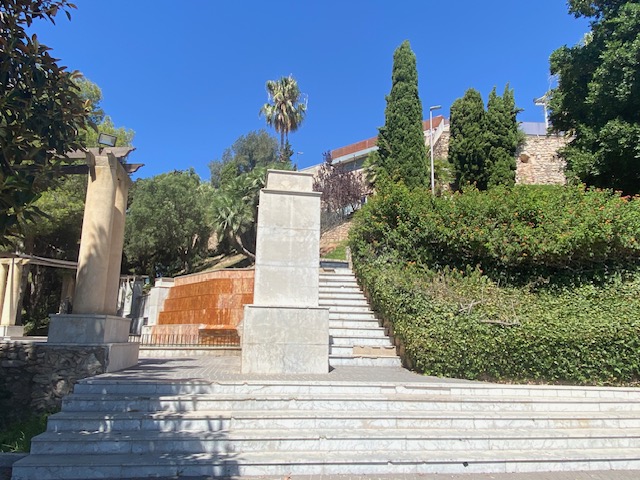
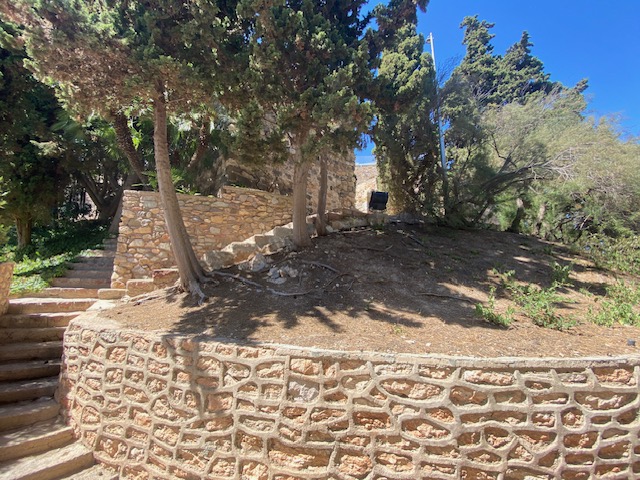
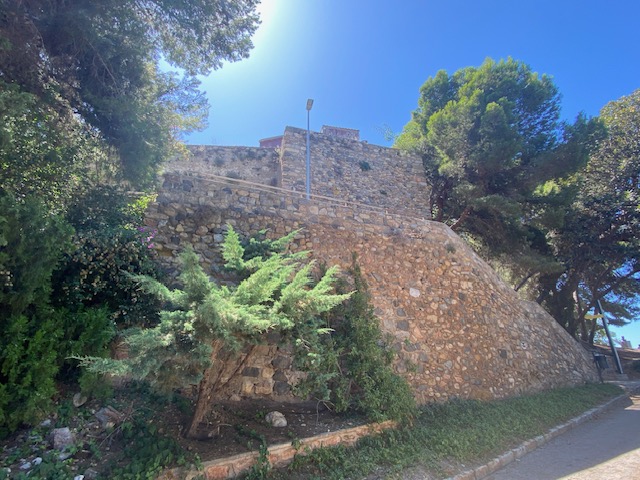
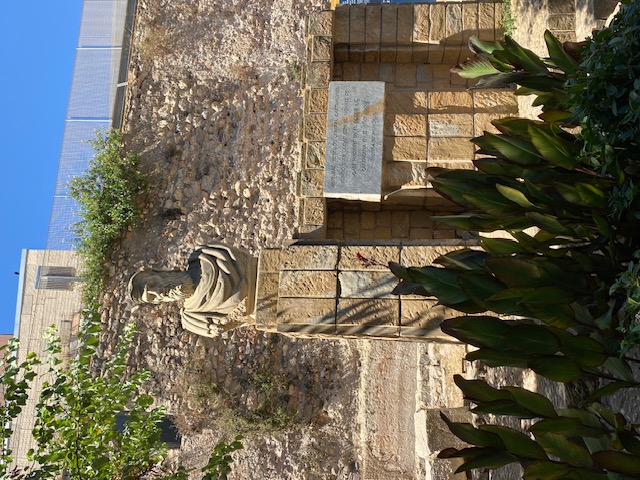
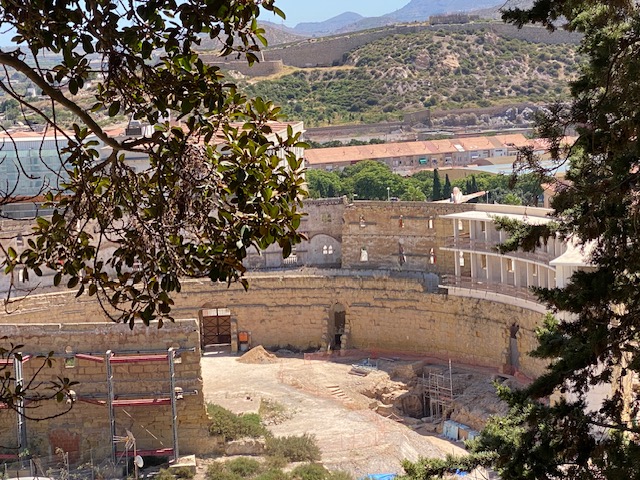
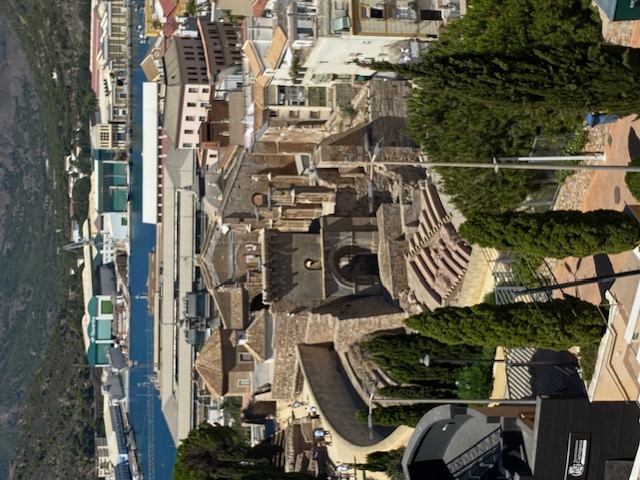
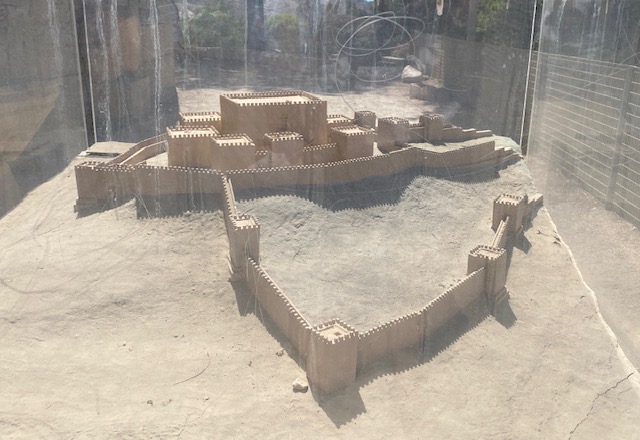
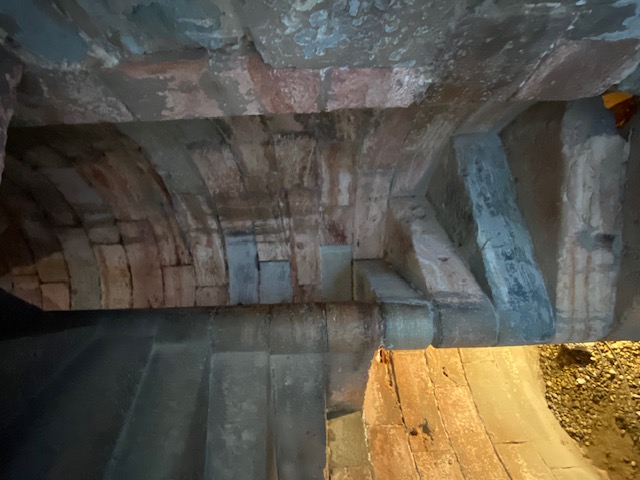
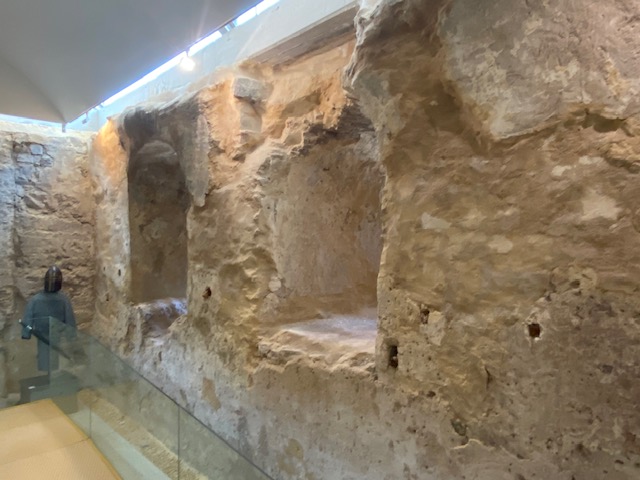
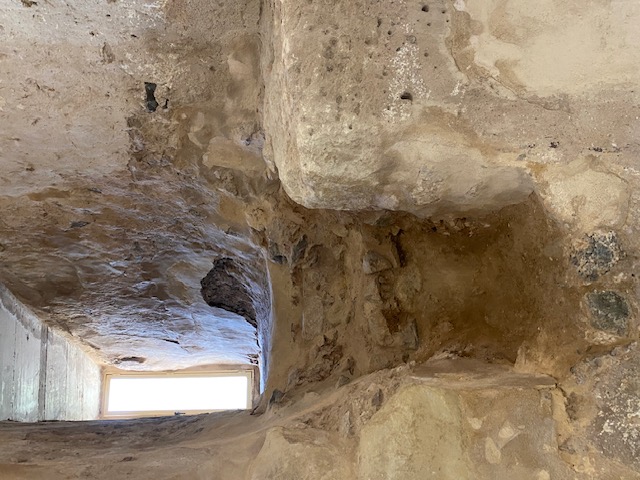
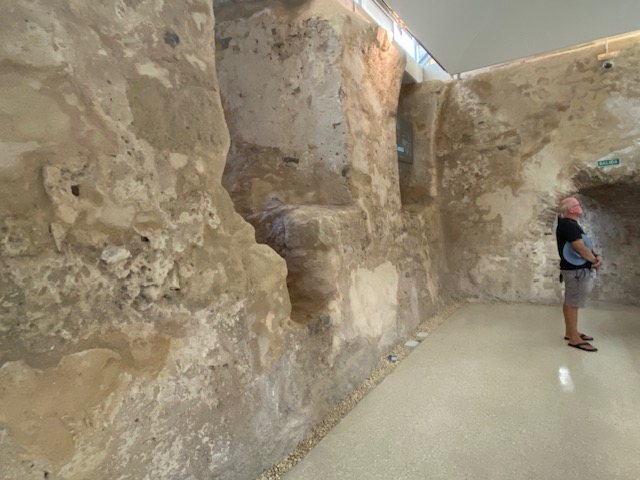
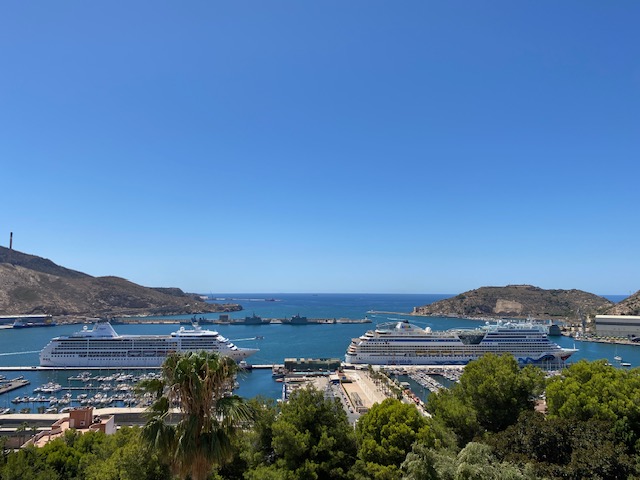
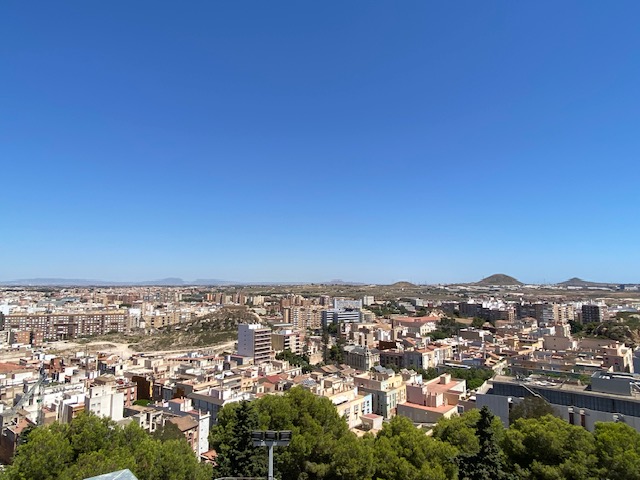

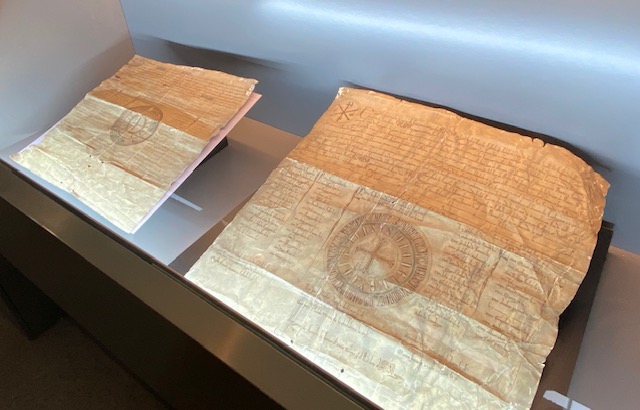

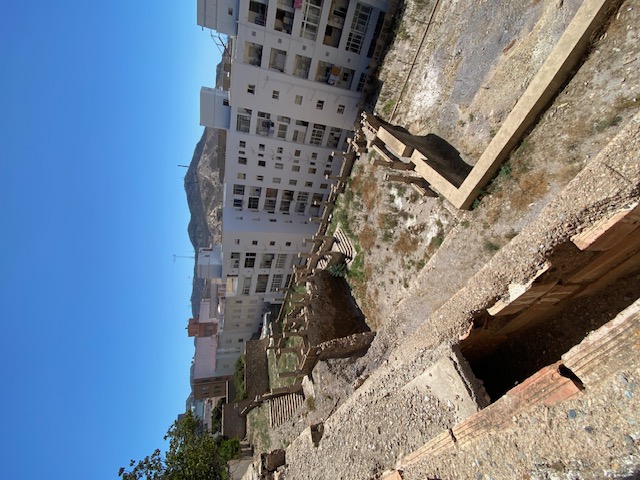
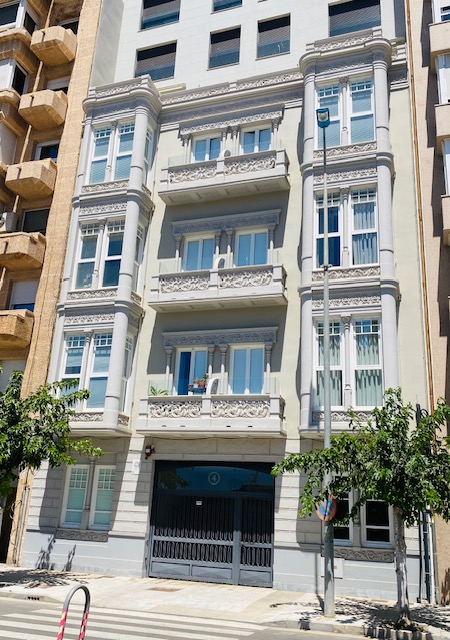
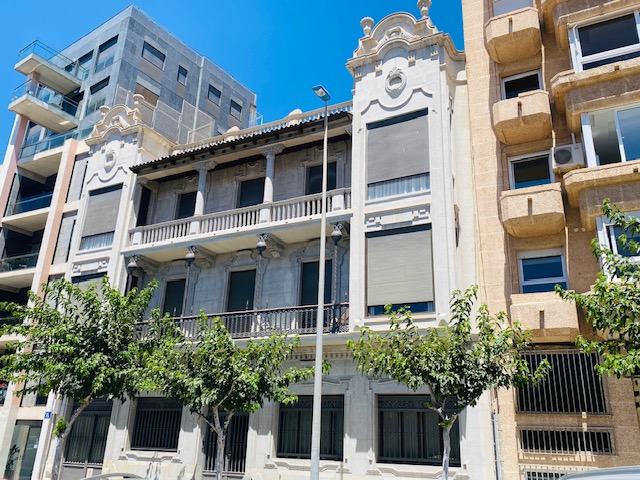
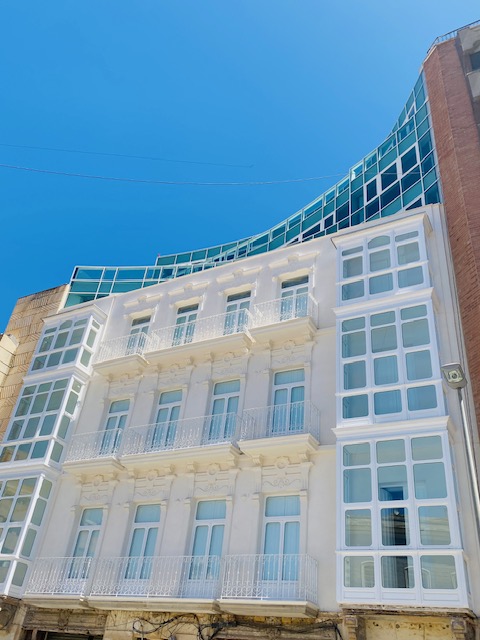
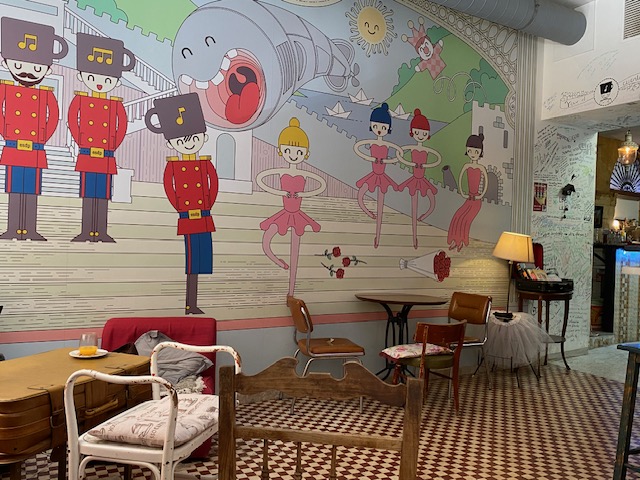
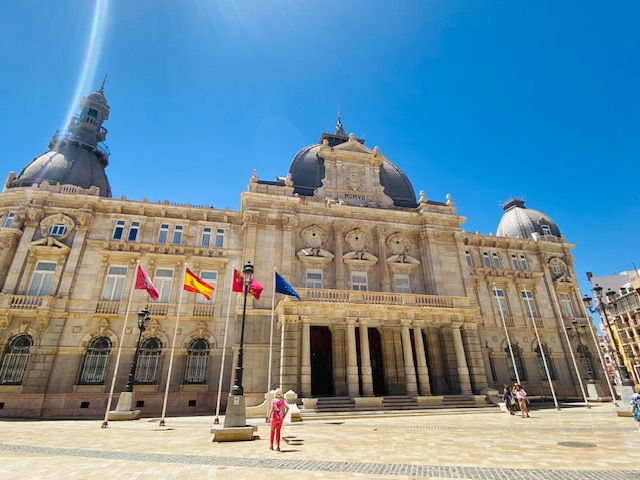
Since we were nearing the area of the Mediterranean Sea where recent orca attacks have occurred, we hugged the coast as much as possible and tried to stay below the 20 metre / 60 Ft recommendations from the Spanish government and the scientists involved in the research of this orca behaviour, as well as motored rather than sailed, the latter, of course, not an option in the light winds.
We did, however, have a slightly later start than we intended, primarily because we waited on a marinero, who said he’d be on the dock in “ten minutes” after we called him. He was supposed to take the access cards, refund our deposit and help us cast off. Instead, after a half an hour of hanging around and waiting, there was no sign of him, so the cards were taped to the electric and water console on the dock and we cast off ourselves. Who knows where our cash deposit will end up, although we wouldn’t be far wrong in surmising it won’t be going back into the petty cash drawer.
En route, while Roy ran the watermaker and kept watch, Elaine, besides having a nap, reviewed the orca situation by accessing the various groups and apps available to the sailing community to help monitor the situation. We weren’t altogether thrilled, though, to learn the attacks in the Mediterranean Sea had more than doubled since she last looked at the statistics before leaving the Balearic Islands.
We were also surprised to see a fair number of yachts sailing up and down the coast, most, like ourselves, keeping close inshore as much as possible.
It was lovely scenery along the way, including spotting the smallest beach we’ve seen in Spain and the blooms of jellyfish were our entertainment for the day; the latter not quite as big as those we saw in Australia, but big enough, nonetheless.
By 1600 we were tied up to our dock in Yacht Port Cartegena, but not before we had to drift outside the harbour for about half an hour, per instructions from Port Control, while a gas tanker berthed. Getting onto our dock, thankfully an easier t-dock, was a tad tricky, nonetheless, given that the wind had picked up significantly; of course, exactly when we didn’t want stronger winds!
Once settled, we registered with the marina office then took a wander around the waterfront area in search of a restaurant, where we could have an early dinner and a cold beverage. Besides finding Mare Nostrum, where we enjoyed another delicious seafood paella, we found a rather odd, but enormous waterfront area and a very clean tidy town, all basically deserted, though. Finding a submarine haulout facility was, however, a first. The waterfront did to come to life as the heat of the day subsided, but it was still an enormous area for the relatively few people around.
We had also changed our plans to stay two nights here, since the marina could accommodate us, which will give us a little more time to explore.
After dinner and our walk we returned to Paw Paw and crawled into our beds. The stress of this passage through the Mediterranean was catching up with us, particularly now that we had the orca situation to deal with, something we could certainly do without right now!
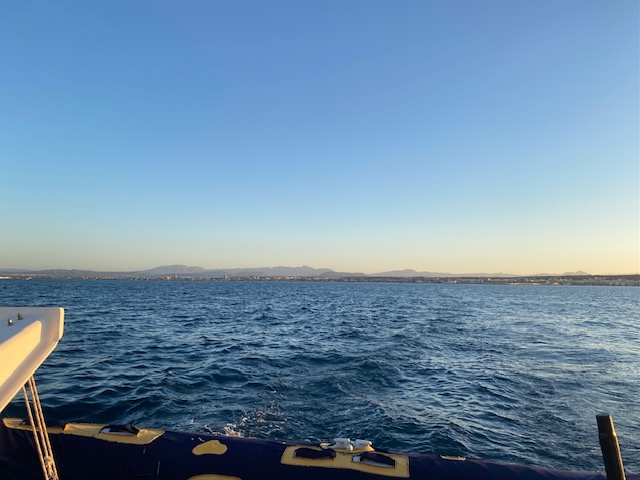
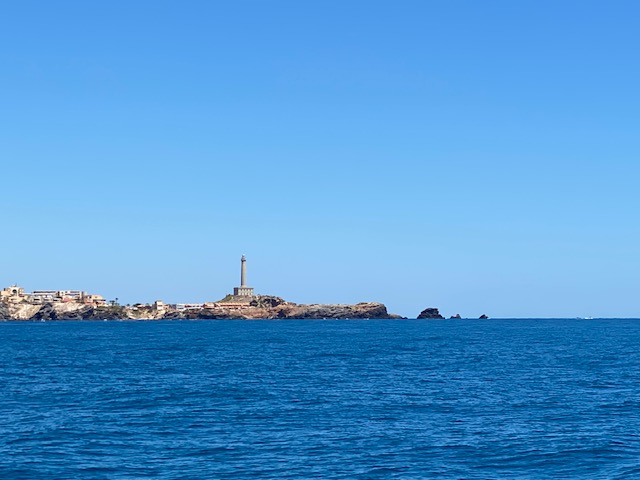
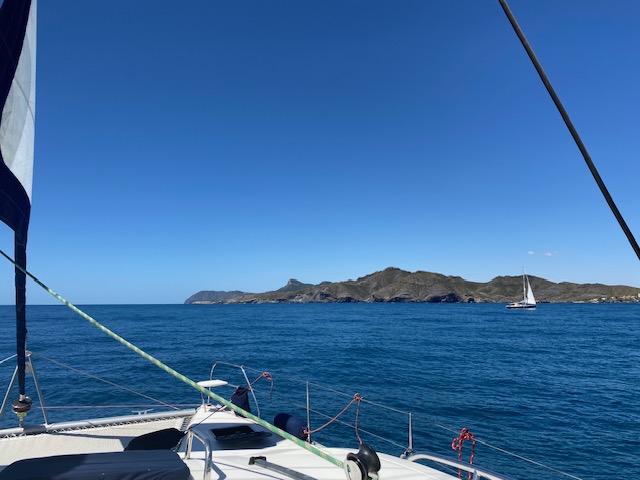
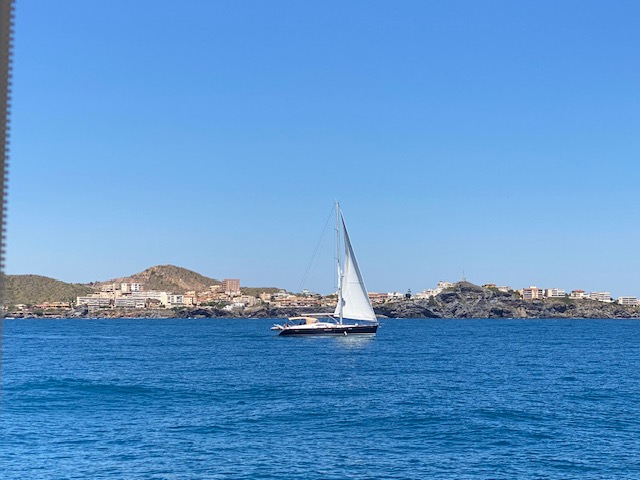
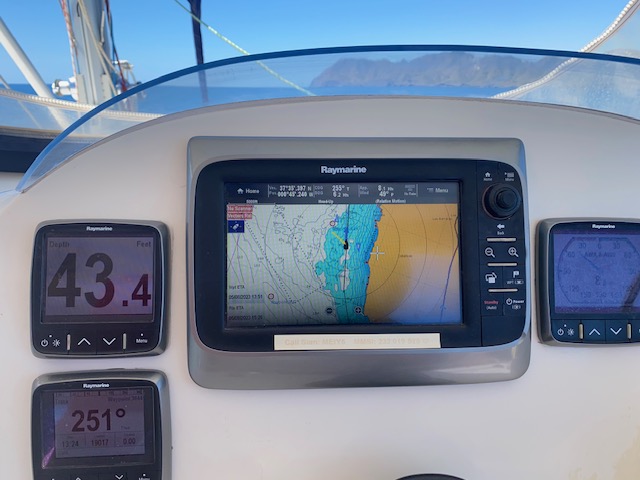

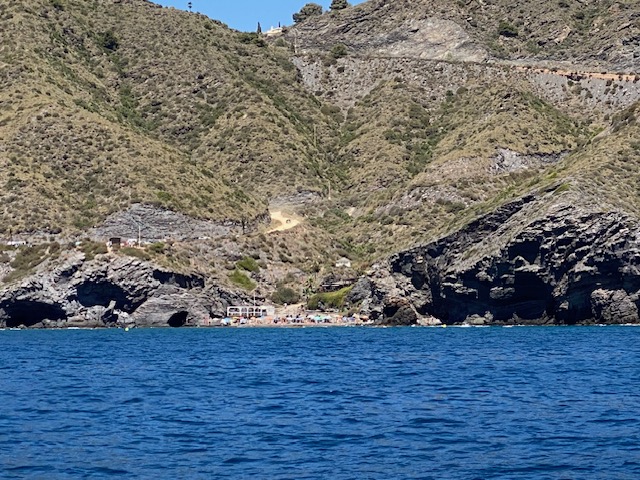
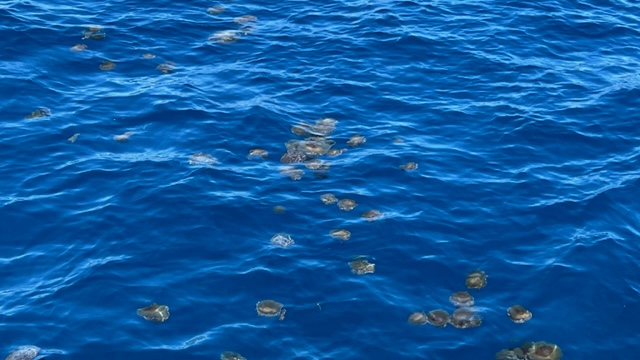
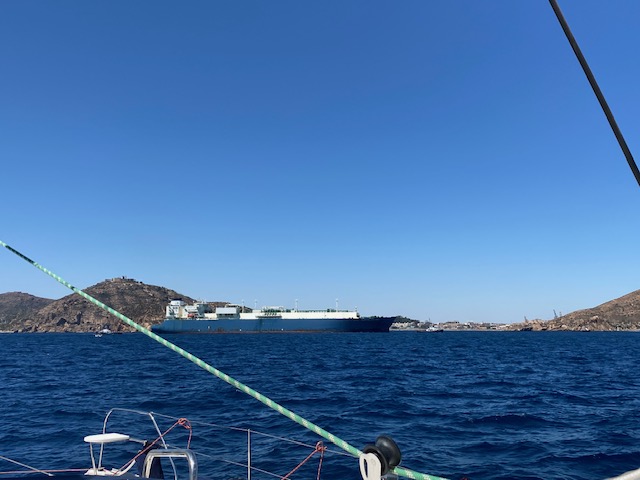
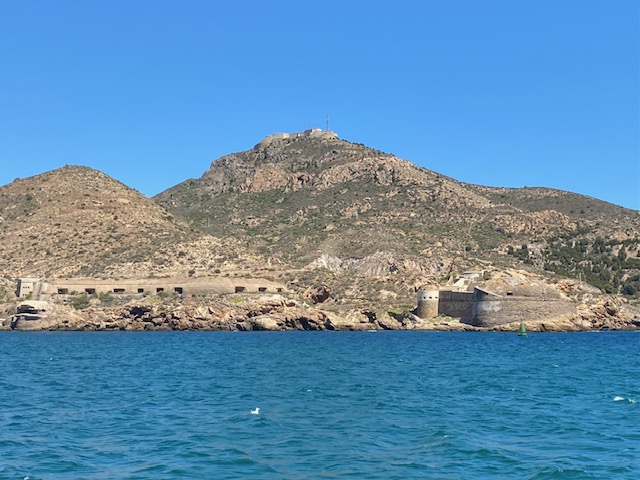
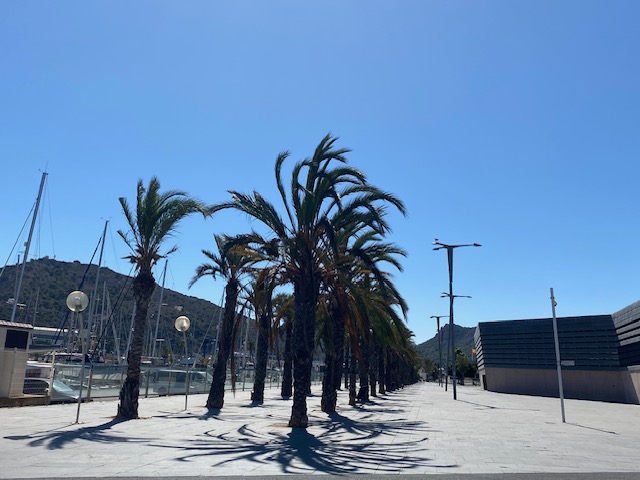
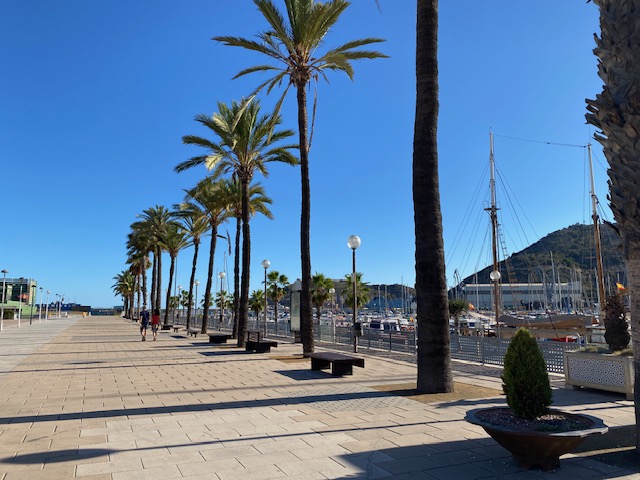
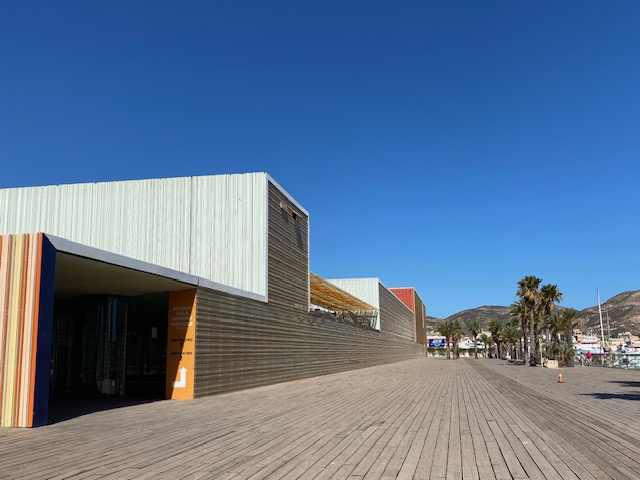
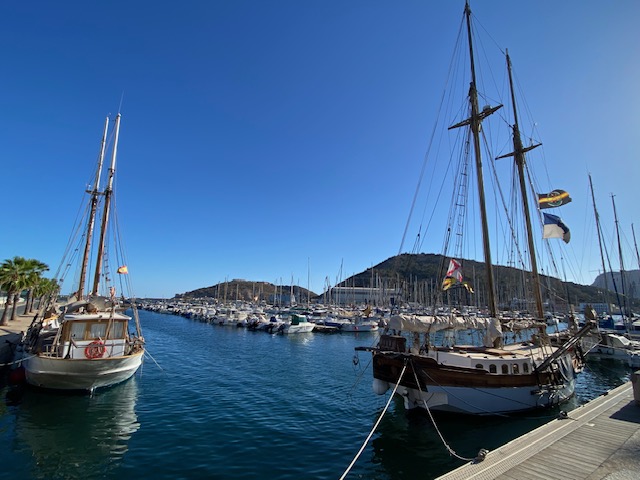
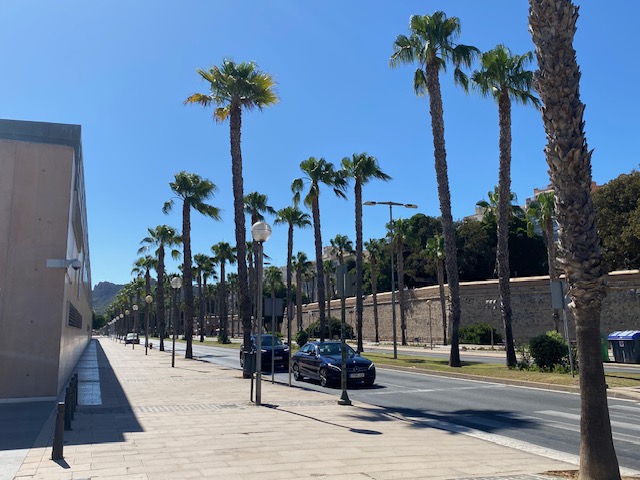
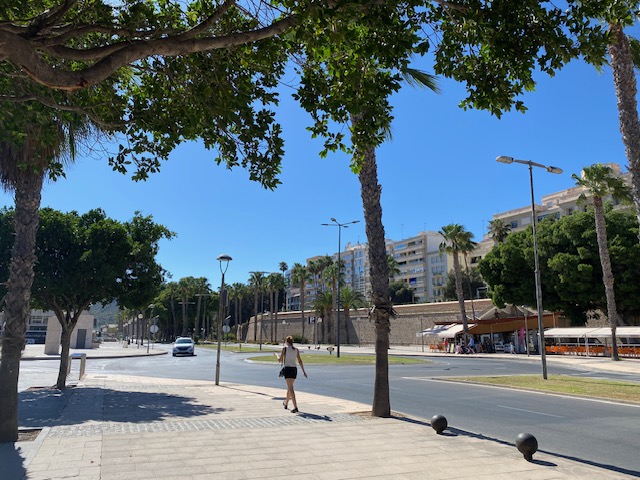
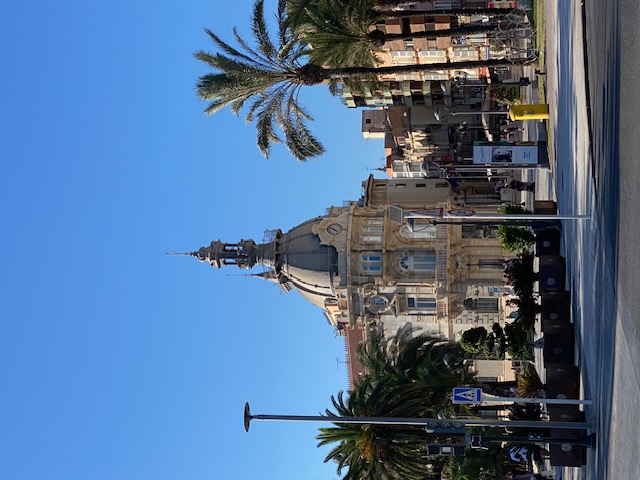
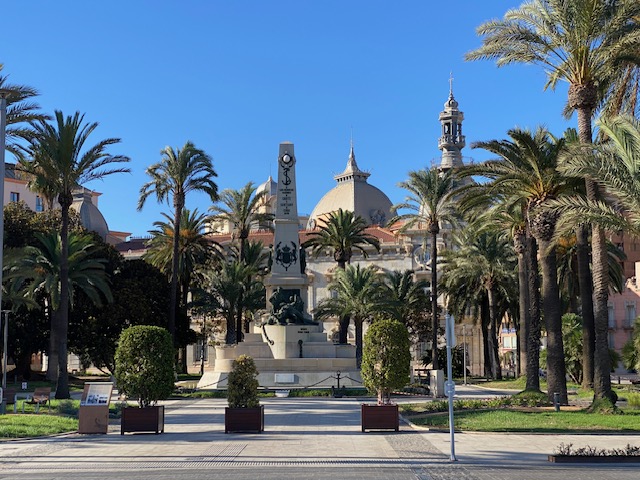
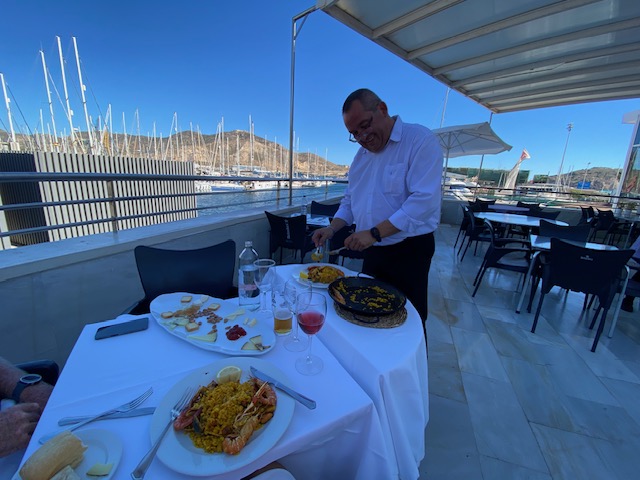

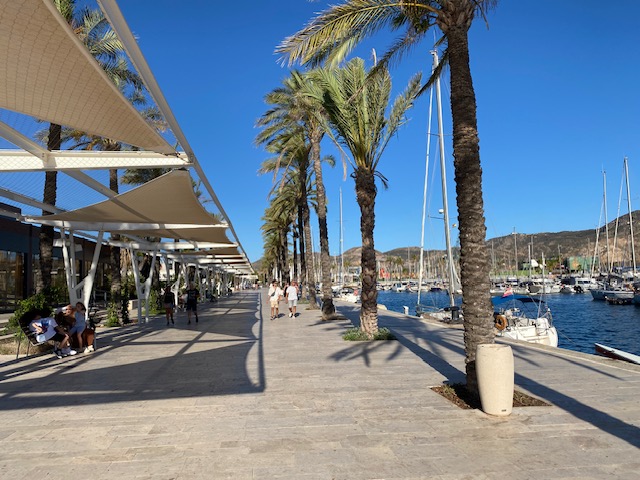
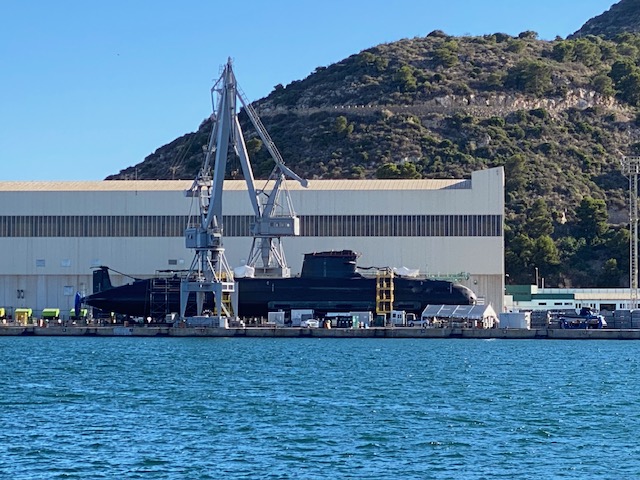
Once all that was out of the way, Roy took a walk to the nearest supermarket to purchase some meat for our barbecue dinner and chatted to Keenan, while Elaine chatted to her sister, Dianne. It was well after 1900 before our day slowed down and we could wind down until bedtime.
The brunt of the winds arrived overnight, hitting 28 Kts in the protected marina and causing our wind alarm to sound; something that woke Roy up, but Elaine slept through it all, only surfacing around 0600 and then going back to sleep until her alarm woke her at 0830; she’d slept so soundly she didn’t even hear Roy wandering around on deck during the night to make sure everything was in order. We could only imagine what the winds would have been like in the less than ideal anchorage we would have ended up in on Ibiza Island; an overnight sail to get to a marina that could accommodate us, was a small price to pay for safety.
After bacon butties for breakfast, we walked the short distance back to the supermarket Roy had visited yesterday and topped up on our fresh produce, then returned to Choco & Latte Puerto for coffee and a baked delight, this time choosing their chocolate and hazelnut croissant, which definitely gave new meaning to a chocolate overdose. Yummy!
Back onboard and after a chat to the floating neighbour, who had helped us yesterday, Elaine sanitised and stowed our purchases, while Roy enjoyed a late morning nap.
This afternoon we revisited our itinerary, reset dates and listed possible stops along the Spanish coast to Gibraltar. Unfortunately this is not a well protected coastline in most instances, compounded by the recent orca attacks south of Malaga, which is definitely increasing the complexity of the logistics involved. All we can do, however, is take each day as it comes; for every nautical mile sailed, it’s one nautical mile closer to our destination.
Deciding to follow a recommendation from a floating neighbour, we walked to the non-touristy area of the town for dinner. After finding the restaurant and waiting for them to open, we had a little snoop around and also found the town square, where people were out enjoying their evening. Dinner was at an Italian restaurant, Sapori D’ Italia, just for a change.
Returning to Paw Paw we spent some time chatting to neighbours on the dock before calling it a day and heading to bed. We had another early start in the morning to continue down the Spanish coastline.
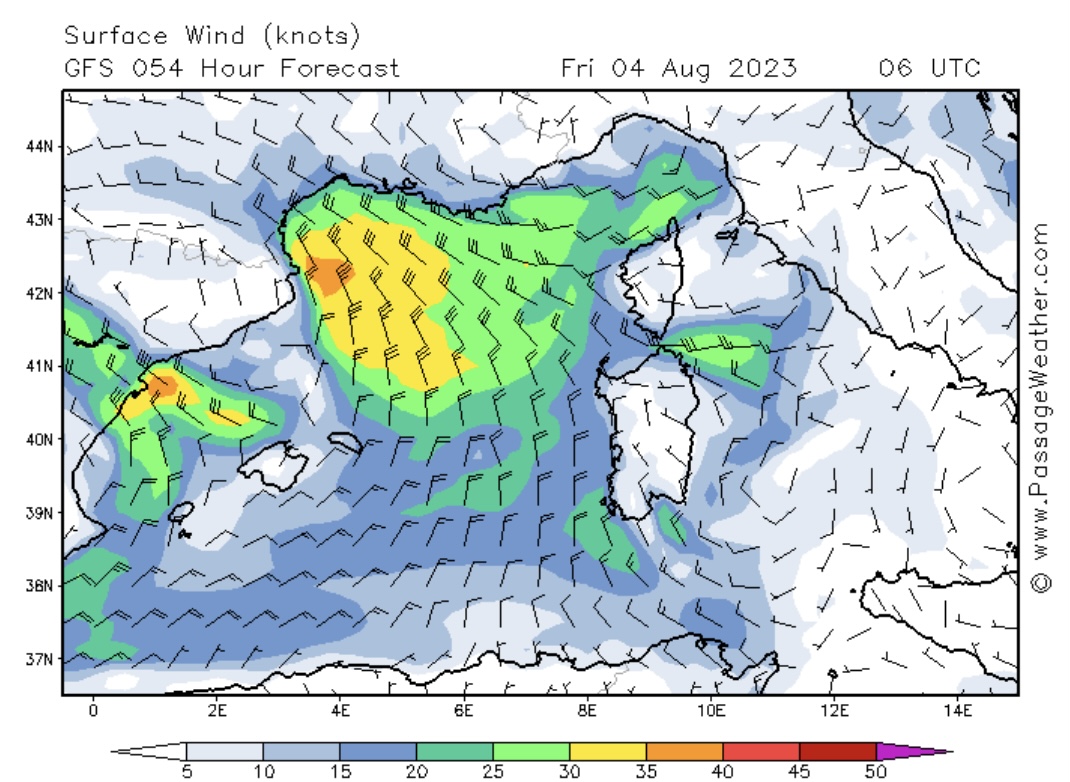
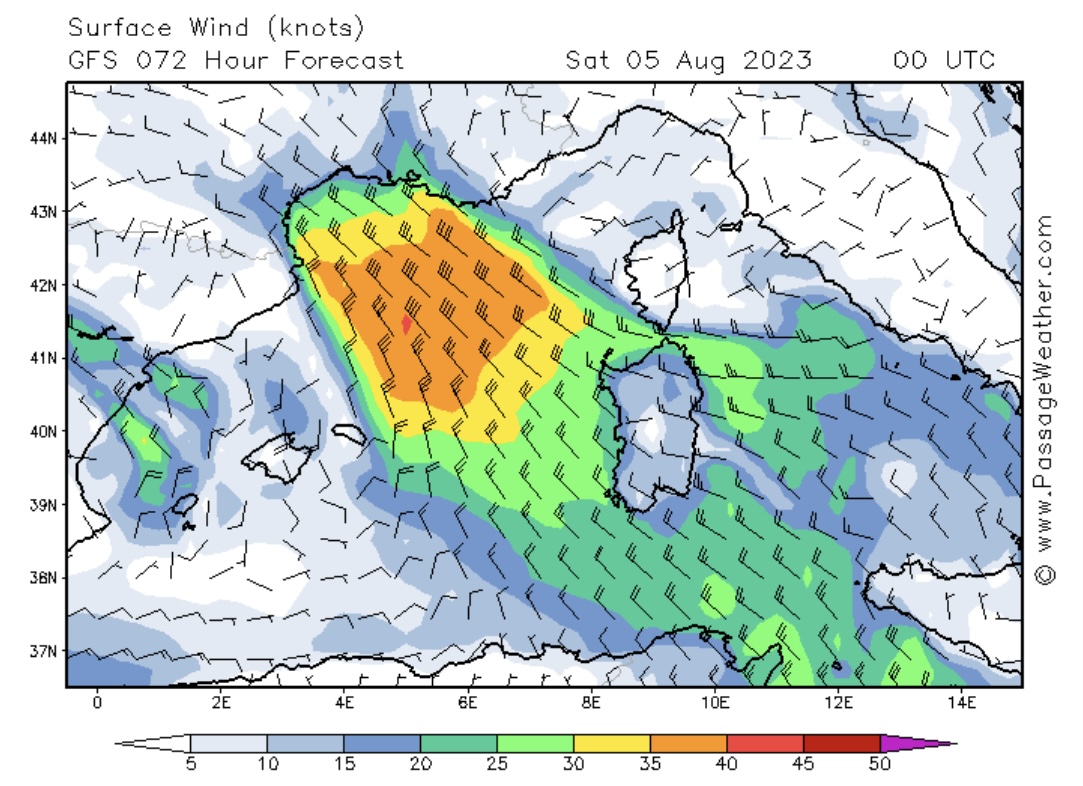
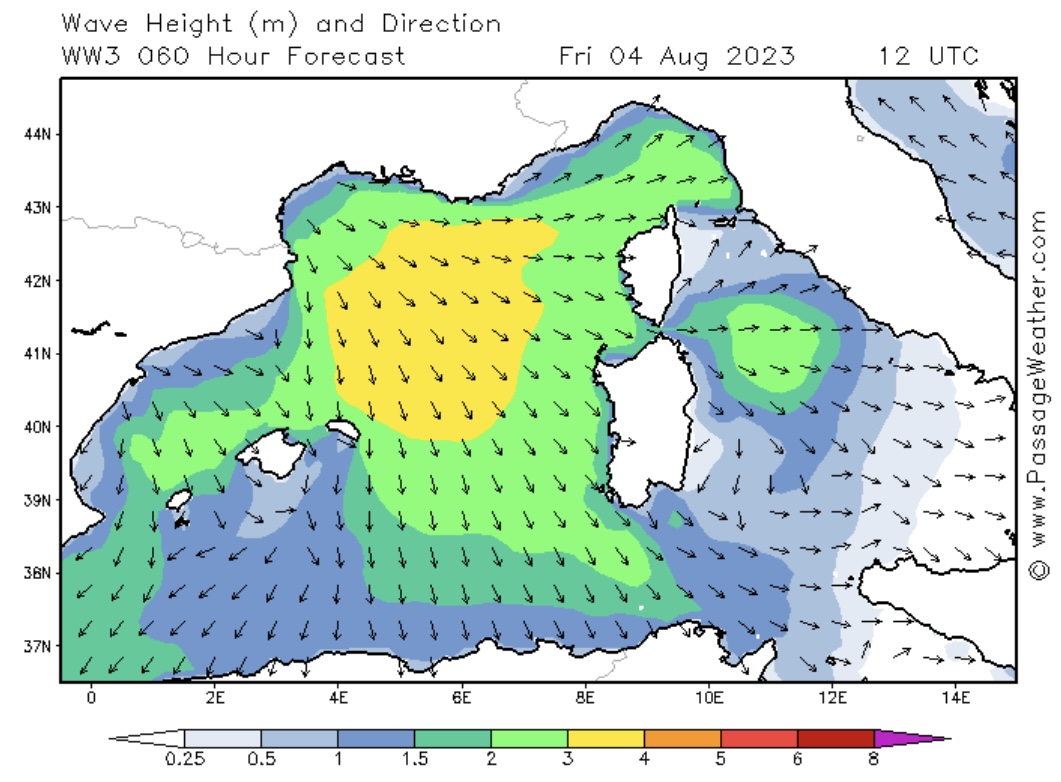
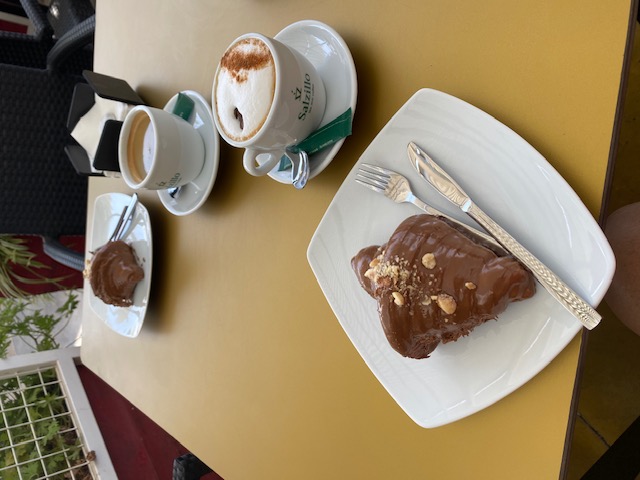
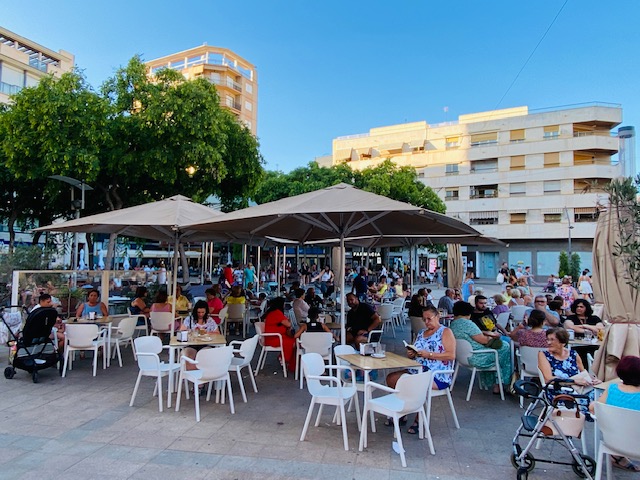
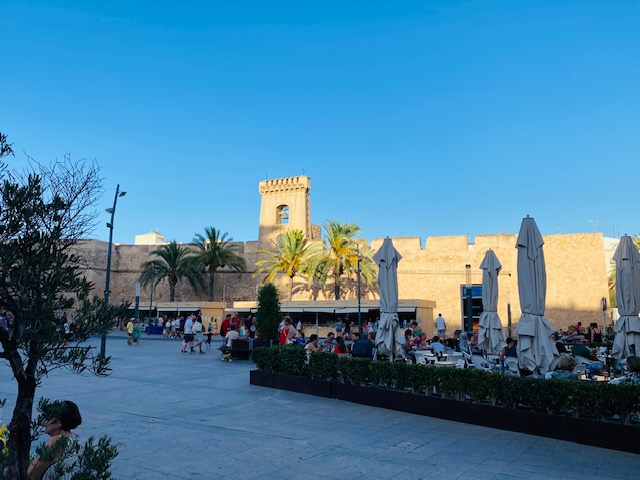
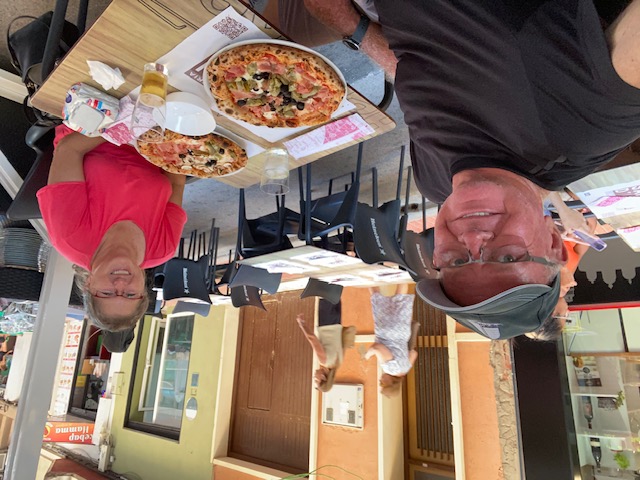
After seeing lights on the horizon, one set to our port side and one to our starboard, but no AISs (Automatic Identification System) appearing on the chartplotter, Elaine switched to the radar and spotted two echoes coinciding with the lights. The binoculars helped identify a red navigation light on the vessel to our port side and the radar confirmed it was travelling in the opposite direction to ourselves. Visually there was enough room to pass port to port; mystery one resolved. The second light, however, had Elaine completely baffled; it was a single white light high up in the sky, which she initially thought might be a star, but assumed it was a tricolour, atop a mast and moving away from us ie she was seeing the white stern light. There was just one small problem; the echo on the radar was moving closer to us and she couldn’t see any other lights.
So, once the vessel to port had safely passed, she turned 10 degrees to port. Still not comfortable at what she was seeing, she turned another 10 degrees, then decided to hand steer, basically positioning Paw Paw almost perpendicular to our course as this vessel got closer. When she was eventually able to see it with the naked eye, it was another yacht, without any navigation lights on, no one on watch and the white light was, in fact, the anchor light! Absolutely astounding!
Then hearing another “pan pan” in less than 12 hours, this time related to an overdue arrival of a black motor-yacht into Ibiza from Valencia on the Spanish mainland, with three people onboard, was disconcerting, but, after what Elaine had just witnessed, not altogether surprising.
We find it completely bizarre that an AIS is not mandatory, especially in such a busy yachting part of the world and overnight distances being sailed, not to mention the speeds at which these motor-yachts travel and the number of times there clearly isn’t anyone paying attention at the helm, based on the number of motor-yachts we’ve had to hail as we’ve crossed the Mediterranean Sea. We’ve also wondered if any kind of training is required to own and operate a watercraft in the European Union or indeed in the Mediterranean regions, especially since there is no one policing the situation, except the “Posidonia Police” offering severe fines for infringements in the nature reserves or Posidonia prairies.
Regarding the latter, we have to admit, we found this aspect of anchoring around the Balearic Islands very frustrating, especially since the most protected anchorages were those that were restricted due to the presence of Posidonia prairies. Although these anchorages had mooring balls, there weren’t nearly enough for the demand. That left the non-restricted anchorages packed to the hilt and slim pickings for everyone else. Scratching our heads at what all the fuss was about when there was precious little sea life to inhabit these prairies anyway, we realised we must be missing something and, indeed, we were.
Research revealed that Posidonia Oceanica, commonly known as Neptune grass, is a seagrass species that is endemic to the Mediterranean Sea and is an actual plant with flowers and fruit. It forms large underwater meadows and is considered the world’s oldest organism, around 100,000 years old, as its origins date from the Pleistocene geological epoch, often referred to as the Ice Age, which lasted from circa 2.58 million to 11,700 years ago.
The meadows have a very high carbon absorption capacity, being able to soak up to fifteen times more carbon dioxide every year than a similarly sized piece of the Amazon rainforest and are, therefore, referred to as the “lungs” of the ocean.
The largest Posidonia reef is located in the Balearics in the “Ses Salines d’Eivissa i Formentera” protected area and is listed as a UNESCO World Heritage Site, together with the prairies around Mallorca Island. Clearly there is a very valid reason as to why these meadows are being protected and rightly so, regardless of the inconvenience it caused us.
At 0156 we crossed back to the Western Hemisphere, the first time in seven years since arriving in Fiji from Tonga in 2016.
Unfortunately the “pan pan” was repeated throughout the night with no indication that it was cancelled by the time we arrived in Marina Marimar in Santa Pola.
By 0915 we were safely tied up to our berth, following which we got the water and electricity connected, the latter needed so we could run the air-conditioners in the sweltering heat, even though it meant hauling out the transformer. Once that was done, Roy visited the marina office to complete all the necessary documentation, while Elaine had a shower. By then we were ready to have a snoop around, finding an extensive waterfront lined with cafés, restaurants and bars. We chose Choco & Latte Puerto to enjoy a coffee and baked delight, although, a caffeine and sugar boost did nothing to alleviate our fatigue, both desperately needing a nap after returning to Paw Paw and before getting the laundry done. It was a nice change, though, to be able to use a coin operated laundry facility again when we eventually surfaced to do the laundry.
A delicious dinner of traditional Santa Pola rice with lobster was enjoyed at Malamadre, by which time the sun had set, the scorching heat had subsided and the waterfront had come to life. A stroll along the waterfront after dinner with the throngs of locals and tourists allowed us to not only enjoy the cooler temperatures, but live music and dancing as well.
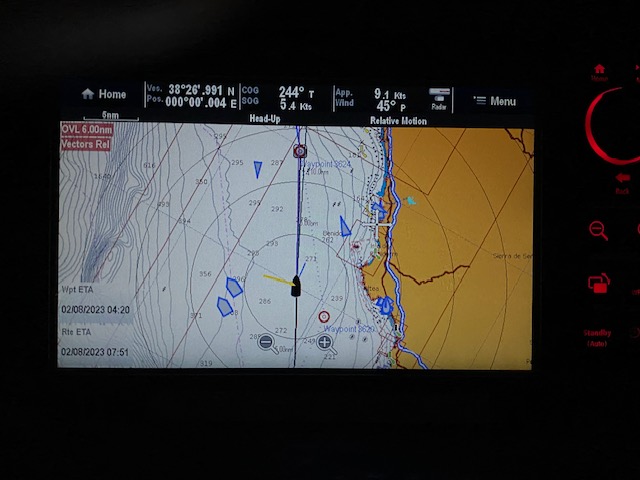
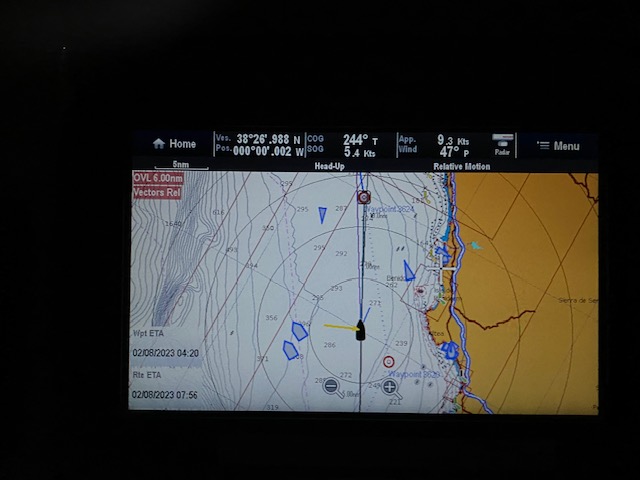
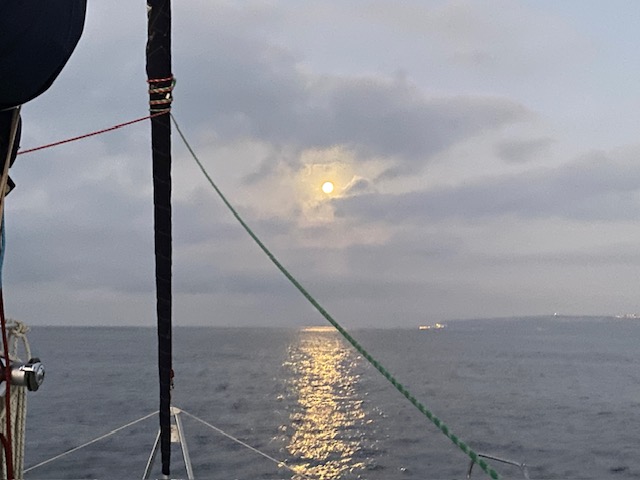
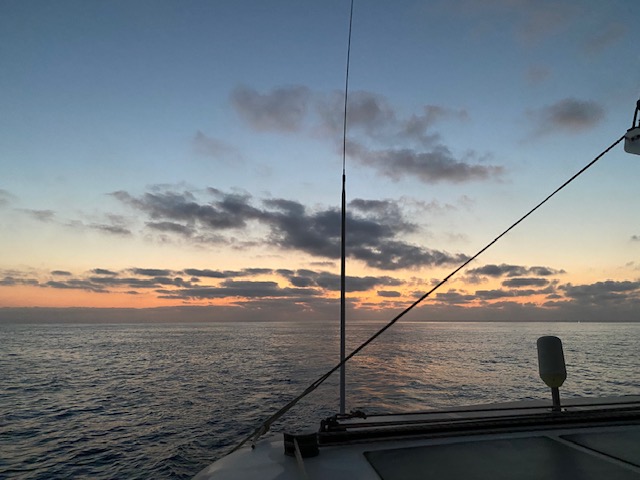
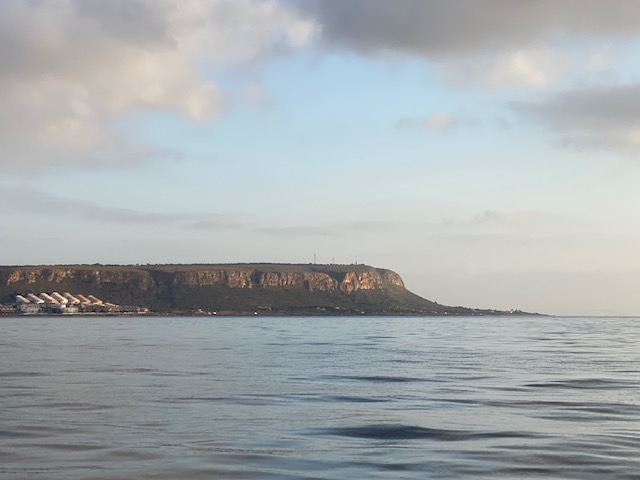
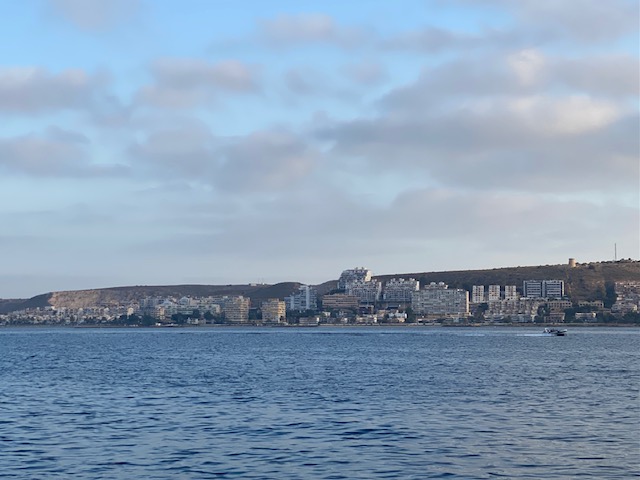
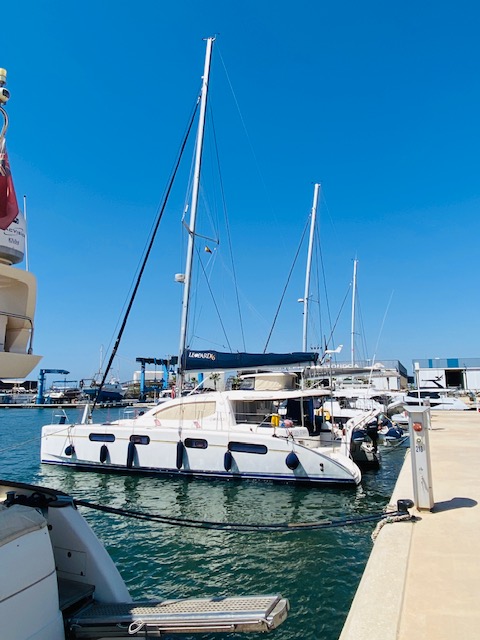
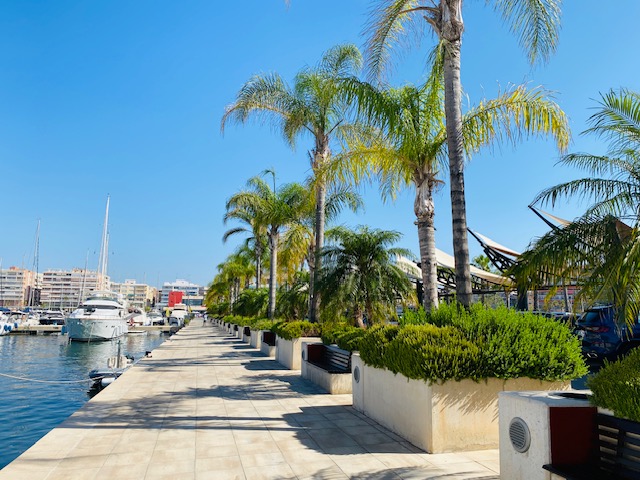
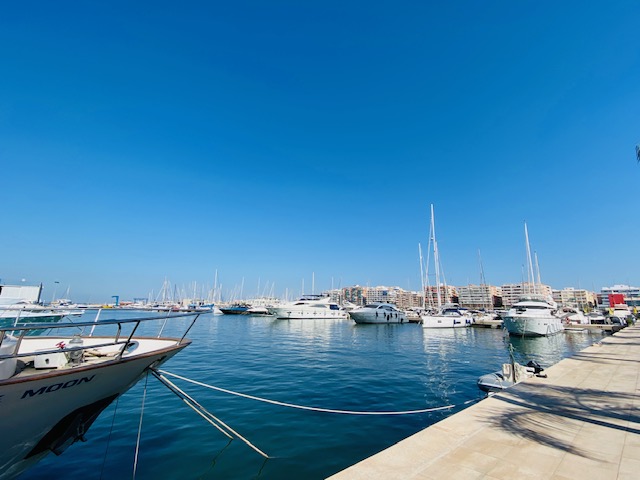
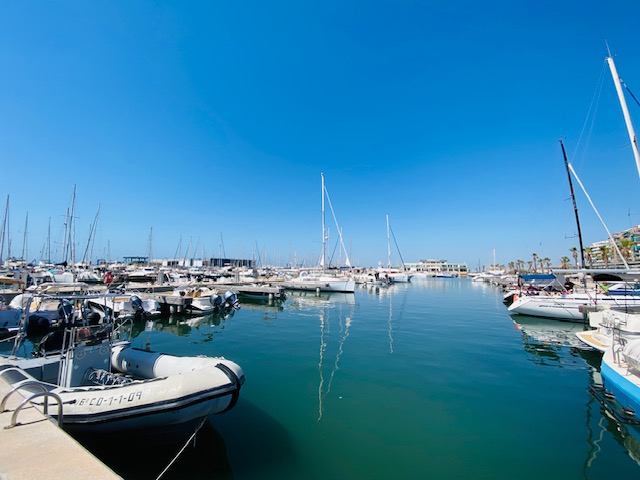

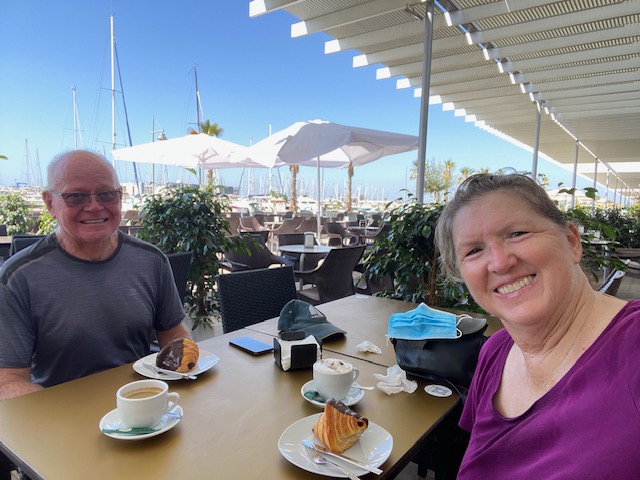
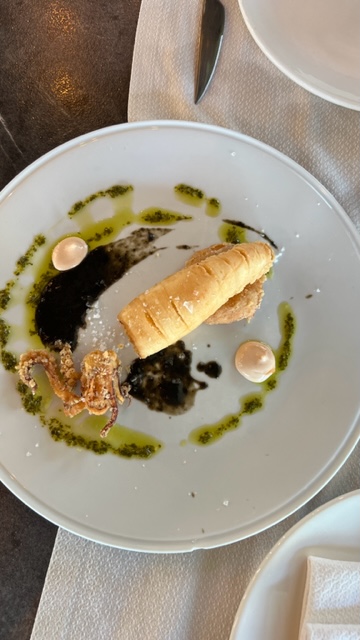
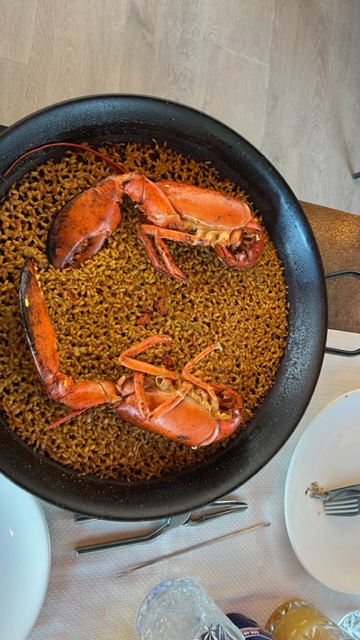
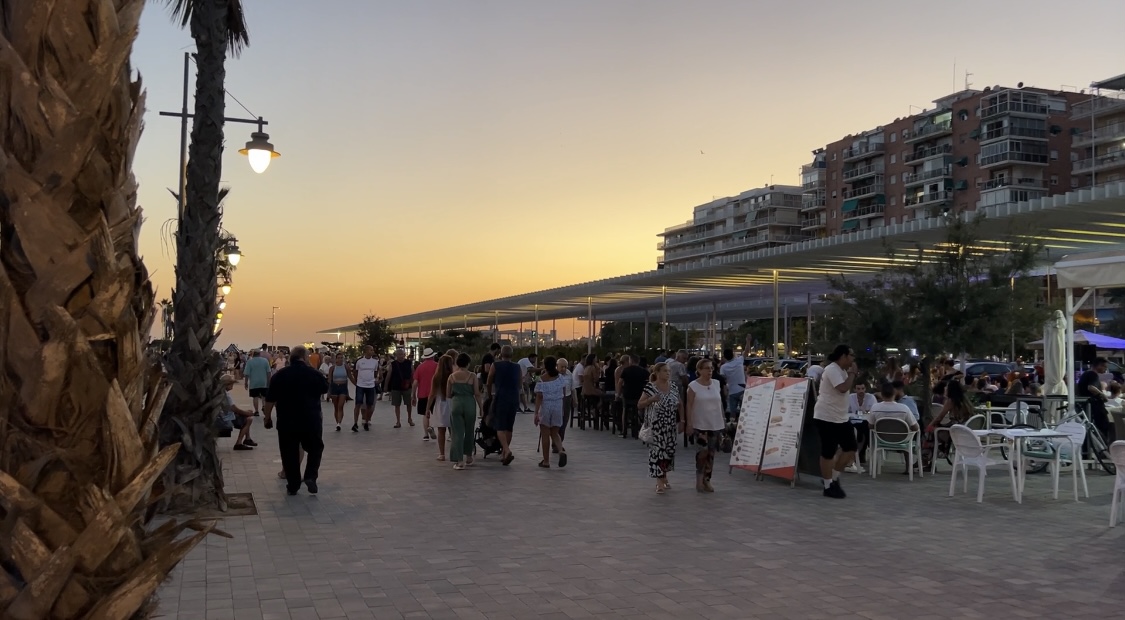
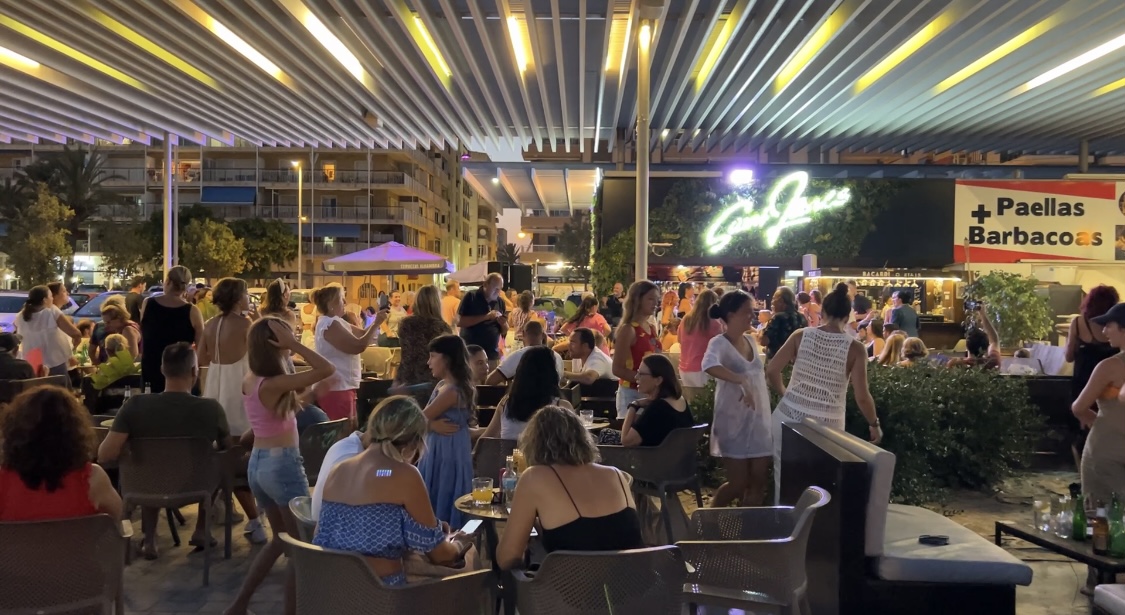
However, after another perusal of the weather, indicating strong winds out of the southerly sector, then switching to very strong winds out of the northerly sector later this week, neither of us felt comfortable in the anchorage off Formentera Island. However, in the process of trying to find another anchorage that would be protected from the southerly winds and another, in close proximity to it, to get protection from the northerly winds, since there weren’t any anchorages that offered both, we were suddenly questioning our sanity for even staying a minute longer in the Belearic Islands.
With that, our plans changed. Given that we’d already weighed anchor at around 0800 and had said goodbye to Formentera Island, after first having to extract our anchor from under the party boat in front of us, we diverted to the nearest anchorage off the southern coast of Ibiza Island, dropped the hook, had a nap, woke up and prepared Paw Paw for departure, including completing all the activities on our Pre-Sail Checklist; we were heading to mainland Spain after securing a berth in one of the marinas, delighted to find one that had space for us, even though this meant another overnight sail.
By 1430 we’d weighed anchor for the second time today, but not before we had to extract the anchor from under a rock, which Roy noticed when he went to clean our paddle wheel on the depth sensor, and had set a course for Santa Pola, just south of Alicante. With that, we said goodbye to the Belearic Islands, but, of course, not before getting a final “bounce around” in the wakes of two different megayachts that clearly had intended to remove Paw Paw’s bow rather than go astern of her, regardless of the fact that we were the stand-on vessel in both instances. There wasn’t a lot, if anything, we were going to miss about these islands!
Maybe we’ve become jaded, but “sailing” in the Balearics has been a case of running from one marginal anchorage to another to avoid weather and numpties. We had originally planned on spending a week on Formentera Island to enjoy another “mini holiday”, but it was simply impossible, bordering on hellish actually! The cherry on the cake was that we couldn’t even swim off the back off Paw Paw for fear of being mowed down by some idiot in a speedboat flying through the anchorage or getting stung by jellyfish! It was simply not a place where one could relax on the water!
Had we known what our experience was going to be in the Balearics, aside from rhe fabulous time we had in Port de Pollença, we would have done an overnight from there to mainland Spain instead. Being sleep deprived from bouncing around all night in swell, dealing with wind shifts and dragging yachts and / or listening to raucous crowds, we could just as easily have been sleep deprived from doing our watches anyway.
Around 1710 a distress call was put out to all ships over the VHF radio regarding a vessel flooding and requiring assistance between Mallorca and Ibiza islands; not the kind of incident you want to hear about just before an overnight sail, but it was too far away for us to render assistance regardless. Turns out it was a 24 metre, German flagged yacht, which received assistance, given the hundreds of watercraft in that vicinity and by 1840 the mayday call was cancelled and the situation under control, thankfully.
We, on the other hand, were motor-sailing, reaching 6.9 Kts, given that the winds had backed to the southeast and we’d picked up the southwest setting current. That meant we would need to slow down once we reached the mainland so as not to arrive in the dark or before the marina opened. Regardless, by 1930, we were just 20 NM off the Spanish coastline and on a course to avoid Cape Negri.
Other than that, we had a beautiful full moon to light the way.
>/p>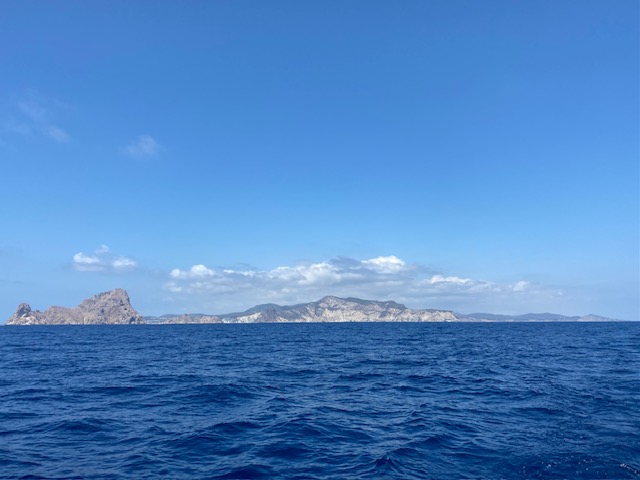
>/p>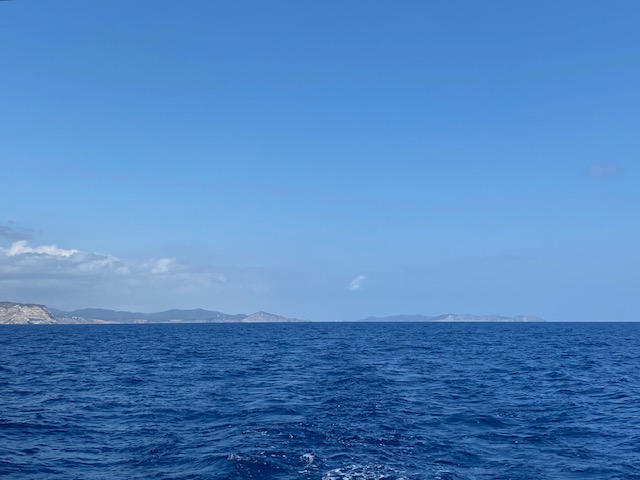
>/p>
So, after breakfast we dinghied ashore, deciding to use the “dinghy dock” in the town harbour rather than beaching it in the lagoon, then collected our bicycles. It’s fair to say, Roy was very dubious and sceptical about Elaine’s ability to actually stay on the bicycle and avoid some or other disastrous consequence, but she was confident she could manage the excursion without incident.
Besides taking the wrong route initially, which first took us in a direction we didn’t want to go, we then ended up on the main road between La Savina and Sant Francesc Xavier and, although we were in the bicycle lane, it was definitely not very pleasant and downright dangerous with cars, trucks, buses, motorbikes, etc flying past us.
After stopping for water and regrouping, we realised we’d missed the turnoff a few miles back, essentially adding 5 Km to what was supposed to be a 10 Km bicycle ride. Regardless, we found the correct route and enjoyed a lovely cycle through the countryside on dirt roads, passing numerous homes, farm fields and one or two vineyards, but it was very dry. We actually wondered how anything could grow, although there were plenty of trees. It was also interesting to see the many stone walls built by the Moors in 902 AD, who brought their advanced knowledge of agriculture and irrigation to the island and apparently the ancient irrigation systems introduce at that time are still in use today.
Research revealed that approximately 12,000 people live permanently on the small island, which is only 20 Km long and 2 Km wide.
Megalithic graves provide evidence of colonisation on the island that can be traced back over 4,000 years, but it has also been occupied by the Greeks, followed by the Romans, circa 200 BC. After the collapse of the Roman Empire in the 5th Century, Byzantines occupied the island before the Moors.
During the island’s more recent history, it suffered greatly during the Spanish Civil War and from 1939-1942 there was a concentration camp on the island, for political dissidents from mainland Spain, awaiting execution.
It was around 1300 by the time we made it to Cala Saona and just in time to beat the “Christmas rush” to enjoy a delicious, albeit a very expensive, lunch at Sol restaurant, a rather upmarket, fancy establishment we weren’t expecting, especially since we both looked like something the cat had dragged in.
It was after 1600 by the time we returned to La Savina, but had enjoyed our outing immensely. Stopping at one of the local supermarkets, we picked up a freshly baked baguette and bacon for our light BLT dinner onboard.
Given how hot it was and the state we were in by the time we got back to Paw Paw, we jumped in the water off her stern to cool down, before a shower, dinner and bed followed. Unfortunately the many parties around us were in full swing, with a late arrival continuing their festivities all night, making sleep almost impossible for us.
We had stayed up, though, to see the sunset, but that was hidden by clouds on the western horizon. A beautiful waxing gibbous, however, rose in the east just before we retired for the day.
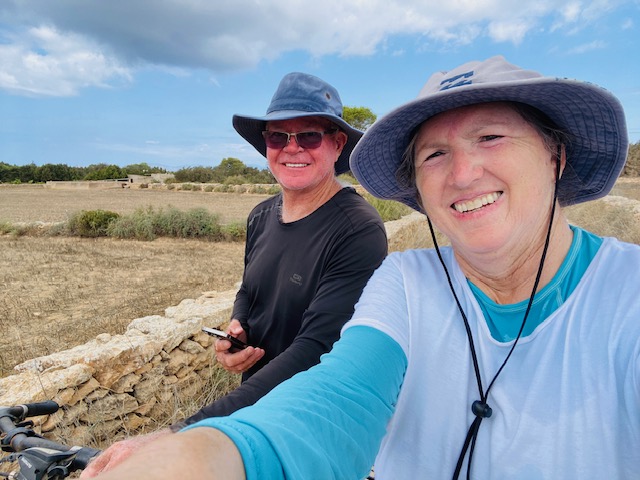
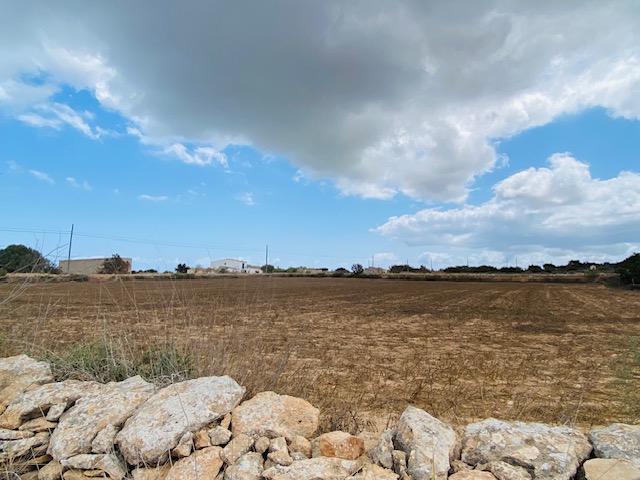
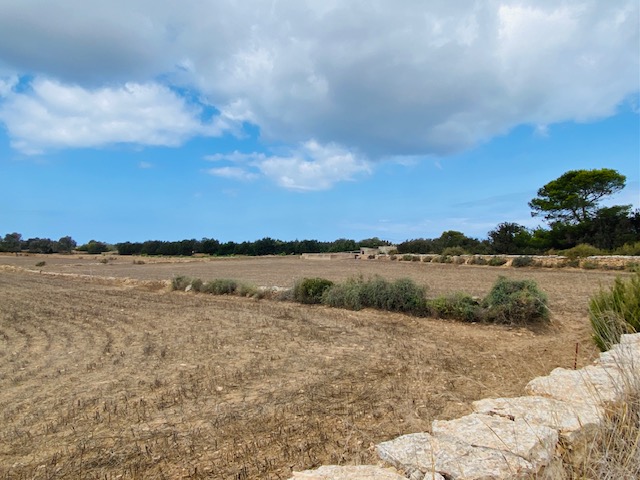
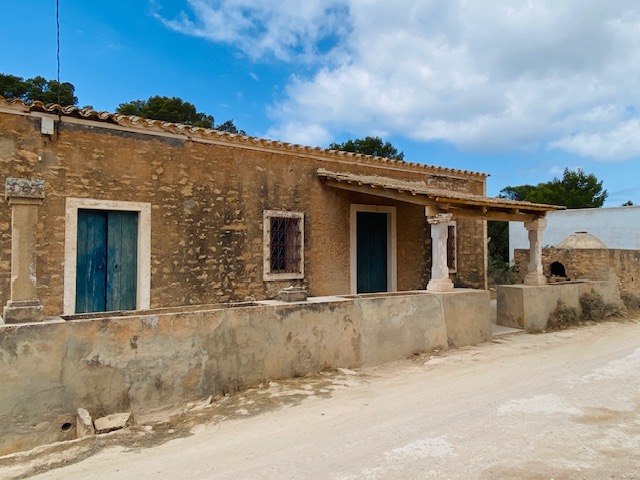
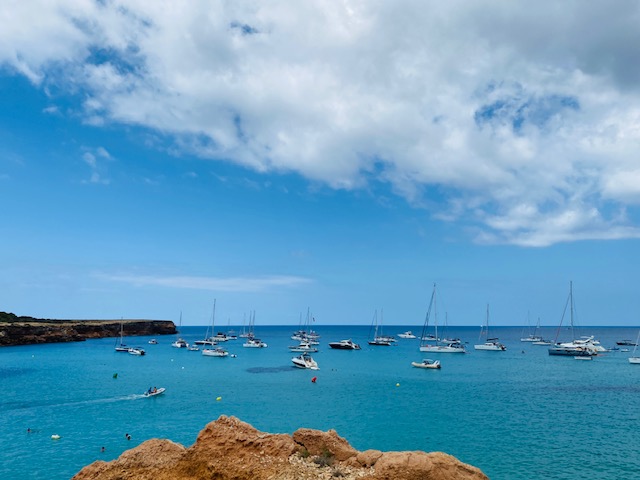
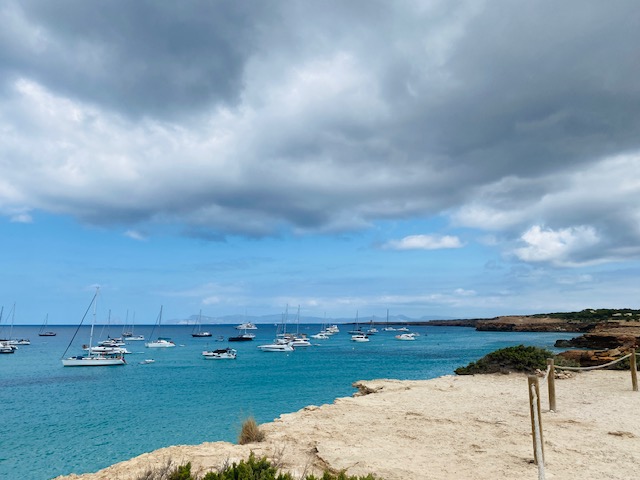
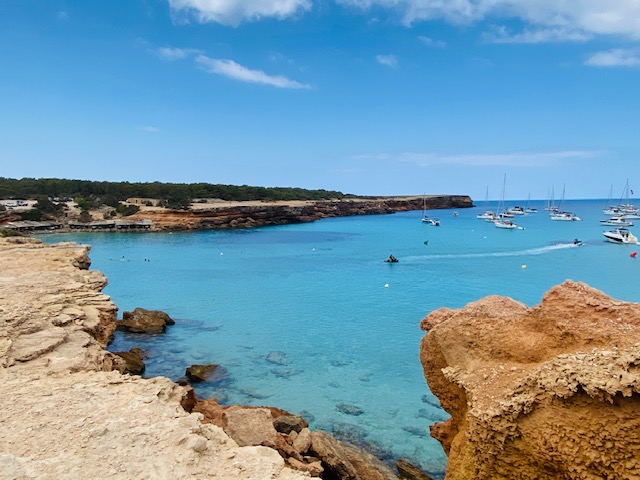
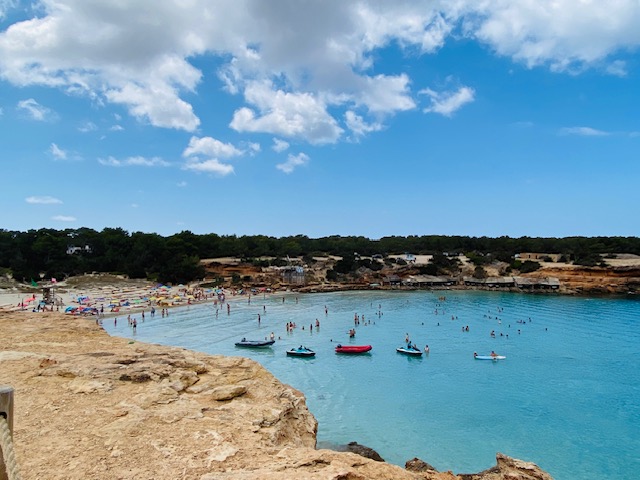
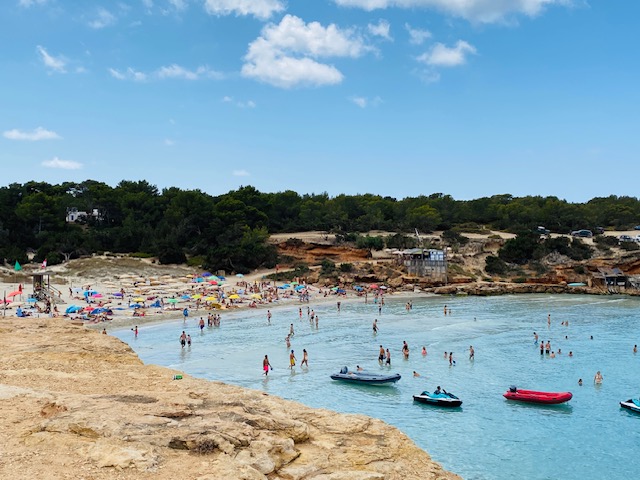
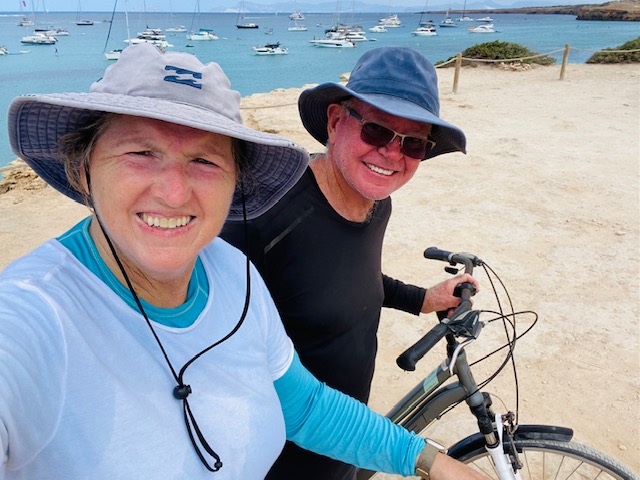
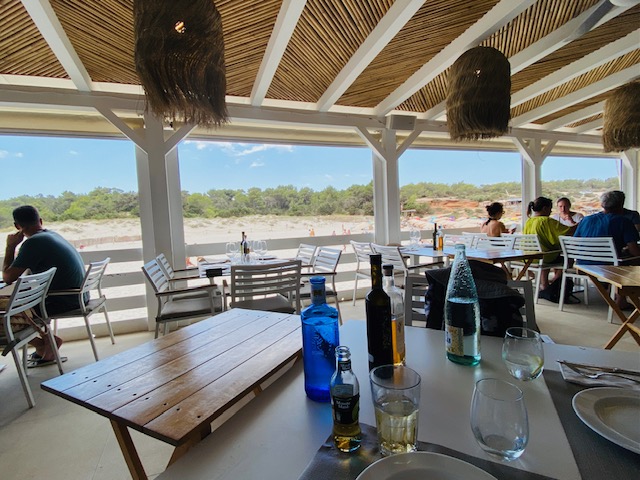
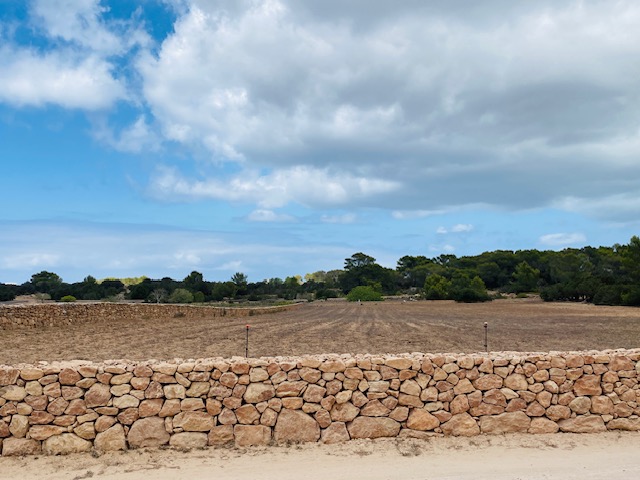
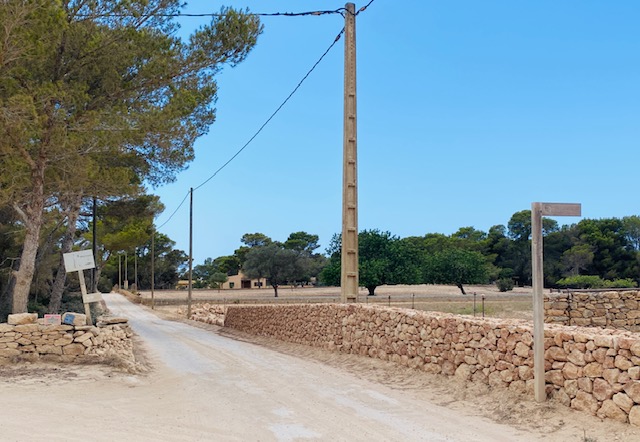
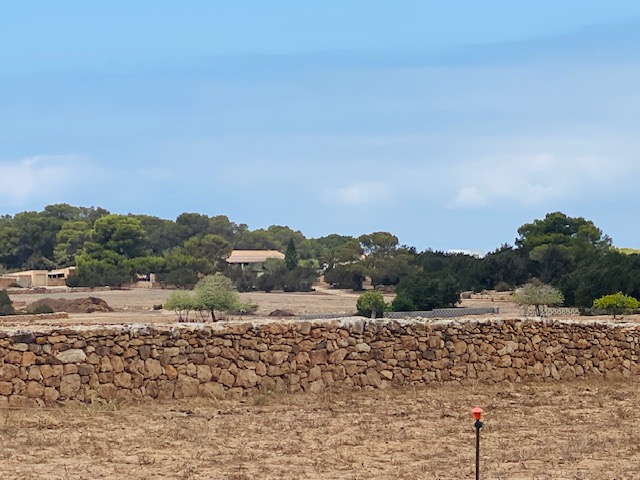
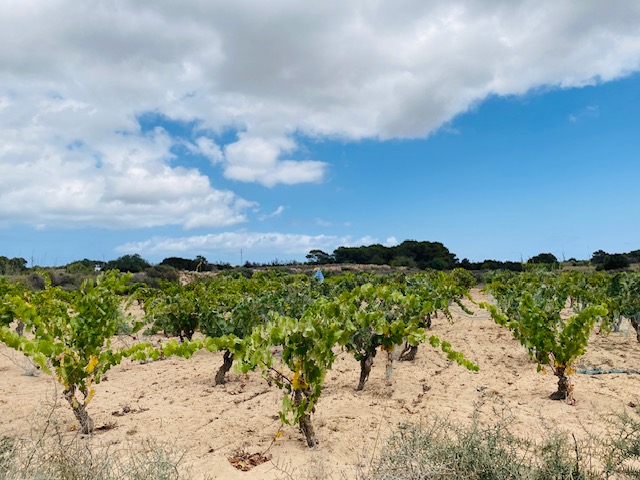

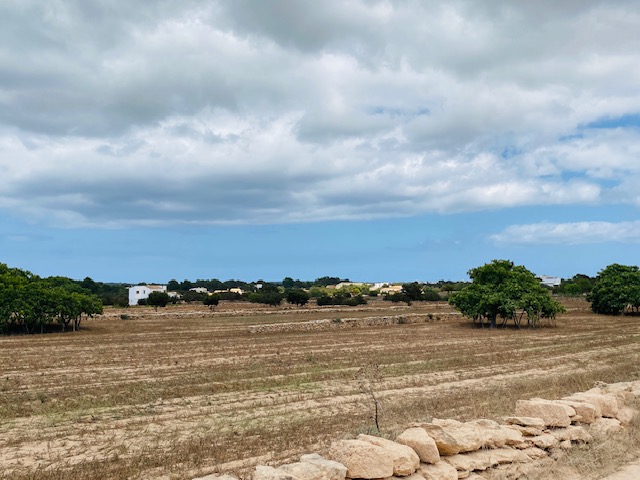
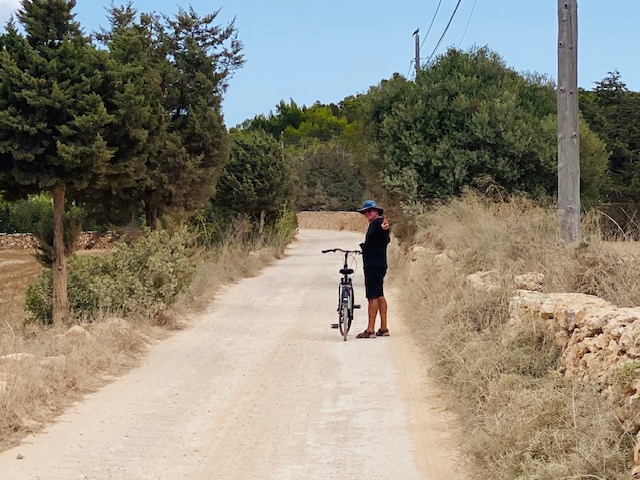
By 1100 we’d dropped the hook off Platia de Ses Illetes, in crystal clear turquoise waters lapping a beautiful white sandy beach and overlooking the famous sand dunes. Perfect!
Well, that was until 1130 when we were literally invaded. It reminded us of the Rome invasion off Ponza Island in Italy, although there were ten times the number of boats of all description this time. At this stage we’d already got in the dinghy to head ashore for a snoop around, but we were rocked around so badly we decided it was far too dangerous and promptly got back onto Paw Paw, raised the dinghy and weighed anchor. Nothing was worth that hell. Of course, in the process, Roy stood on something, which Elaine needed to extract with a pair of tweezers, while one metre waves hit Paw Paw from every direction from the wake all the motoryachts and speedboats racing to get their spot, regardless of where we were positioned relative to their chosen spot!
Moving further down the coast to Racó des Berro, where most of the sailing yachts were anchored, was marginally better, although we still bounced around. Finding a spot between the already anchored boats at least precluded any numpties from anchoring on top of us. It’s fair to say, though, at this stage we just want out of the Mediterranean, but, unfortunately, we’re stuck here whether we like it or not, given the unfavourable weather to the south of us and miserable weather arriving from the north in the next few days.
To preserve our sanity, we eventually found a way to get to shore, after dinghying around the harbour wall and into Estany des Peix, a fabulous lagoon, where we beached the dinghy and enjoyed a walk around the town of La Savina.
Afterwards we found a lovely outdoor restaurant, Port Amagat, and enjoyed a fabulous meal, while Elaine briefly chatted to the family on the Zoom get-together arranged by Elaine’s sister, Deborah.
By the time we returned to Paw Paw, the weekend revellers had departed, but it remained “party central” with a few crewed chartered yachts around us celebrating special occasions. The old adage of: “If you can’t beat them, join them” springs to mind as we sat out in the cockpit and soaked up the atmosphere until the sun set. By then the churned up waters had started to subside and we could head for our beds.
